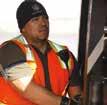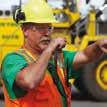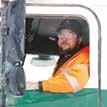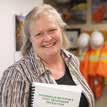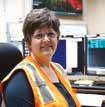
















School districts are prime targets for security threats such as hackers, DDoS attacks, ransomware, and more. For the IT administrators challenged with protecting sensitive data and maintaining connectivity, it’s critical to find a technology partner who can build and deliver the robust, cost-effective solutions school districts require.
The education professionals at Alaska Communications have a strong history of building customized IT environments that provide superior security and performance, with a keen understanding of government funding and a focus on optimizing every budget dollar.



907-777-4362
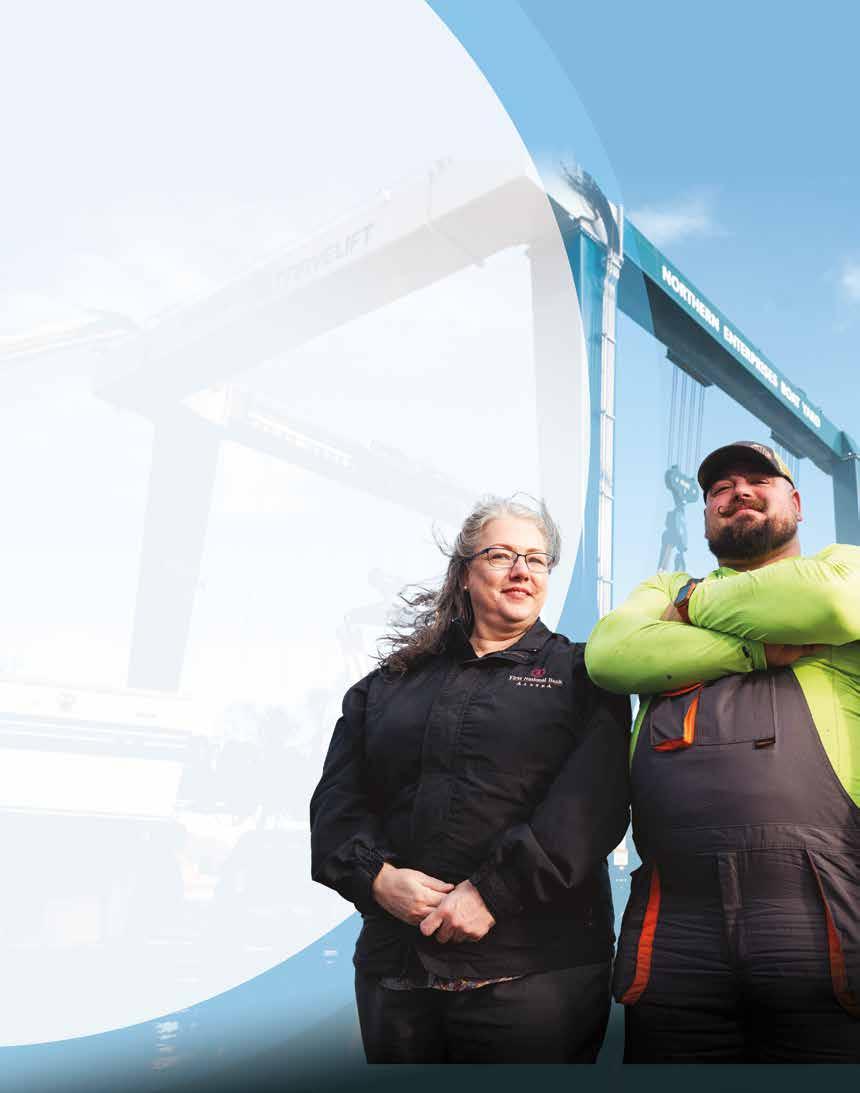

Local and traditional inspiration for architectural detail
By Richard PerryThere are many bridges in Alaska, the natural consequence of our many waterways (and other geographic features, notably Hurricane Gulch at mile 139.7 of the Parks Highway). Many are beautiful, but most are better described as functional.
Not so for the John O’Connell Memorial Bridge that spans the Sitka Channel, the subject of this month’s cover. The American Society of Civil Engineers Alaska Section designated the cable-stayed bridge as an Alaska Historic Civil Engineering Landmark in September 2022. According to guest author Aaron Unterreiner of PND Engineers, “It’s a beautiful bridge, but it’s not boastful. It’s a practical piece of thoughtfully designed infrastructure that has seamlessly woven itself into Sitka’s fabric. In many ways, the O’Connell Bridge represents the zeitgeist of Alaska’s economic development over the last fifty years.”

Answer “Yes” to contribute half of a PFD to an Alaska 529 account. Simply log in to pfd.alaska.gov and update your application prior to the PFD distribution, and you’ll automatically be entered to win a $25,OOO scholarship account.* 202212-2619126

Agood friend of mine had an oven/cooktop that decided it would rather not cook things anymore. After much pleading and attempts to compromise, it remained uncooperative. She and her husband took the opportunity buy their dream oven unit, which required them to order it from out of state. While they waited for the new, willing-to-doits-actual-job oven to arrive, they needed some kind of cooking option to feed her family of six and purchased a counter-top air fryer. When the new oven arrived, she asked if I wanted the air fryer, as she didn’t really have the counterspace for it. I don’t either, at home, but I keep a cooking appliance in my office at work.
I’ve never owned an air fryer, and if this one ever had a manual, it was lost shortly after its unpacking. So after I took it into work and plugged it into the wall, successfully cooking my bagel was between me and the machine.
This particular model has a few buttons and a knob, and after a few minutes of tinkering with them, I was confident I could put a thing in it and the thing would come out toasty. I was, in fact, successful.
That, in and of itself, is a testament to the marvels of engineering. Engineering an item requires taking into consideration endless details, from safety requirements to energy efficiency to ensuring the user can interact with the item so it can fulfill its purpose.
In this issue’s Architecture & Engineering special section, “Top Shelf” is an excellent example of engineering and architecture in action. Anchorage eatery Whisky & Ramen renovated a historic building with a high-end, comfortable restaurant in mind. Guests in the restaurant can observe and appreciate many of the design choices; they will be completely unaware of thousands of other decisions made that transformed the old building into one of Anchorage’s dining hotspots.
Some of the best engineering we ever experience is the engineering we don’t notice at all. Interior design or lighting choices that we don’t consciously notice that put us at ease or build up our energy, or user interfaces executed so well it doesn’t occur to us to question them.
Modern life is an engineered life. We live surrounded by infrastructure, equipment, and other items engineered to solve our problems and suit our needs. And they do such a good job that we notice them most when the tools and infrastructure we enjoy don’t work as expected—when the oven goes on strike over cooking a casserole.
VOLUME 39, #2
EDITORIAL STAFF
Managing Editor Tasha Anderson 907-257-2907 tanderson@akbizmag.com
Editor/Staff Writer Scott Rhode 907-257-2902 srhode@akbizmag.com

Editorial Assistant Emily Olsen 907-257-2914 emily@akbizmag.com
PRODUCTION STAFF
Art Director Monica Sterchi-Lowman 907-257-2916 design@akbizmag.com
Design & Art Production Fulvia Caldei Lowe production@akbizmag.com
Website Manager Taylor Sanders webmanager@akbizmag.com
BUSINESS STAFF
President Billie Martin
VP & General Manager Jason Martin 907-257-2905 jason@akbizmag.com
VP Sales & Marketing Charles Bell 907-257-2909 cbell@akbizmag.com
Senior Account Manager Janis J. Plume 907-257-2917 janis@akbizmag.com
 Tasha Anderson Managing Editor, Alaska Business
Tasha Anderson Managing Editor, Alaska Business
Senior Account Manager Christine Merki 907-257-2911 cmerki@akbizmag.com
Accounting Manager James Barnhill 907-257-2901 accounts@akbizmag.com
CONTACT
Press releases: press@akbizmag.com
Postmaster:
Send address changes to Alaska Business 501 W. Northern Lights Blvd. #100 Anchorage, AK 99503
AKBusinessMonth alaska-business-monthly
AKBusinessMonth akbizmag






Businesses today are coping with the cumulative effects of a slew of issues, including supply chain disruptions, labor shortages, inflation, rising interest rates, the RussiaUkraine war, and the lingering effects of the COVID-19 pandemic.
“The pandemic has drastically changed many businesses,” says Wells Fargo Alaska Commercial Banking Leader Sam Mazzeo. “The labor market tightness, excessive inflation, real estate market changes, and material supply chain issues linked to COVID are ongoing and evolving. Nobody has navigated anything like what we experienced the past three years. Banks and borrowers are forced to reconcile the risks and opportunities related to all of these things.”
The US Federal Reserve (the Fed) raised interest rates dramatically in the past twelve months, up to
their highest points in more than ten years. Mazzeo says most economists are projecting further interest rate increases, as the Fed continues to battle inflation.

Wells Fargo is working closely with its clients to ensure they maintain adequate cash flow and strong liquidity positions. “Working with your commercial banking relationship manager early and often can help you avoid unwanted surprises and offer you flexibility,” Mazzeo says. “It’s a great time to conduct a thorough financial review, including cash flow projections, and have frank conversations to make any necessary adjustments to loan structures and working capital lines of credit.”
While the rising interest rate environment is disconcerting, one of the primary issues for
commercial banking and all industries now is labor, says Jason Criqui, commercial lending manager at Northrim Bank. Finding qualified employees, developing people internally, and finding programs to bring young people in to replace retiring Baby Boomers will be the biggest challenge. “We’re all going to have to be creative in the way we move forward, including leveraging technology to do more with less,” he says.
All these challenges place more pressure on managers, particularly at small companies, says Northrim President and Chief Lending Officer Mike Huston. From the banking side, it created a challenge—and opportunity— for Northrim to support companies’ management with its advice and expertise.
 Sam Mazzeo Wells Fargo
Sam Mazzeo Wells Fargo
However, relationship banking means different things to different people, Huston says. “For us, it means having a banker that understands the market that the business engages in and being responsive to that business,” he says. “We always want to have the opportunity to engage with people.”
Huston has noticed that national banks have been looking to be more efficient with delivering services to Alaska. “Generally, that means reducing the number of people who are based in Alaska,” he explains. “They are working with regional customer service centers that manage relationships for fairly large geographical areas. Community banks are also looking for ways to be more efficient, but our approach is different. We are looking to maintain responsive, supportive, experienced people who are based in Alaska.”
For Northrim, this trend has fostered valuable opportunities for growth.
The bank recently opened a branch in Soldotna, loan production offices in Kodiak and Nome, and a branch in East Anchorage. Northrim is also opening new branches in Kodiak and Nome, bringing its total number of branches in the state to nineteen. “We’re investing in the communities that are within our economic footprint,” Criqui says. “We’re trying to service the whole state.”
Northrim’s expansion efforts are, in part, supported by the success of Alaska Native village and regional corporations. Many of these entities have diversified their workforces across the country, which creates a buffer for economic cycles in Alaska.
“We are up 12 percent on our core loan portfolio; a lot of that has come from developing strong relationships with those entities,” Criqui says.
Many financial institutions in Alaska have seen unusually high deposits over the last two years. Bank deposits are at record high levels for businesses as well as consumers, says Steve Lundgren, president of Fairbanks-based Denali State Bank. The economic shutdown during the pandemic combined with supply chain disruptions stifled spending and, in turn, enabled businesses to save more money. “Banking has been a kind of safe haven the last couple of years with all the volatility in the markets as well as the uncertainty around the world,” he says. “Until those uncertainties and instabilities kind of normalize, I think bank deposits will stay high—at least in the short term.”
Business banking clients at Wells Fargo are also in a strong capital position. Cash balances of commercial customers are higher than at any time in the past five years. “Most of our clients are very well capitalized and

 Mike Huston Northrim Bank
Mike Huston Northrim Bank
"Many businesses have held more significant balances in the past two years related to federal funding from pandemic recovery,” says Elaine Kroll of First National Bank Alaska. “With interest rates rising, customers are looking for options to use or invest that money."
FNBA
positioned for growth or a downturn,” Mazzeo says.




First National Bank Alaska (FNBA) reports a similar situation. “Many businesses have strategically held capital for unseen future events,” says Chad Steadman, corporate lending director at FNBA. “While some businesses invested this capital, others continue to hold onto it.”

Steadman is seeing an increasing number of businesses transitioning ownership—selling to another company, or more commonly, selling to internal employees. “When a business sells to its employees, it is exciting to welcome a new generation of owners in Alaska,” he says.


He also sees businesses buying property they were leasing, thanks to a program of the US Small Business Administration (SBA). “Because many of these businesses are young or the properties are expensive, the SBA 504 program is ideal and offers a low down payment of 10 percent and long-term rates,” Steadman says.
FNBA’s customers continue to look for efficiencies, such as improving workflows and eliminating repetitive tasks. Over the last few years, the bank has seen businesses integrate their accounting systems with their payables and invoicing processes, according to FNBA Senior Vice President, Treasury Management and Anchorage Branch Administration Director Elaine Kroll. “Many businesses have held more significant balances in the past two years related to federal funding from pandemic recovery,” Kroll says. “With interest rates rising, customers are looking for options to use or invest that money. We are working with customers to consider which option is best for them.”
The number of commercial loans has decreased at FNBA, but the dollar volume has increased. Many customers have



opted to use their liquidity to meet small-dollar investment needs, while borrowing for larger investment needs. “These larger loans are typically for asset purchases, which is a good investment for the company long term,” Steadman explains.
At Northrim, commercial loan growth is up over last year, and demand remains strong. Criqui attributes the demand, in part, to the bank’s proactive efforts to reach out to customers to see if their needs are being met.
For Mazzeo’s team at Wells Fargo, the commercial loan pipeline is larger today than it has been in three years. However, Mazzeo notes that businesses are borrowing for defined needs, and opportunistically, as they acquire other businesses or fund capital expenditures. “Interest rates are higher, and debt is more expensive, so businesses are borrowing judiciously, and not just borrowing to put cash on the balance sheet,” he says. “Credit facilities are being extended proactively to reduce uncertainty around the economy and maturities in the near term.”
More specifically, Wells Fargo is seeing more commercial loan demand around business acquisitions and consolidation. Baby Boomers have been selling successful businesses built over their lifetimes, and Alaska Native corporations and private equity groups are acquiring them. In addition, Alaska’s tourism and oil field companies are rebounding from COVID-19 shocks.
“Alaska business leaders know that standing still is not an option for them,” Mazzeo says. “We work with them to help ensure they can operate successfully and continue contributing to the Alaska economy. Throughout it all, our goal for our clients remains the same: ensure that their financial future is deliberate, not reactive based on current market variables.”
At Denali State Bank, Lundgren is seeing some businesses delay expansion plans due to higher interest rates, larger monthly payments, and higher costs. Other businesses are pushing ahead, though. “They think that prices will never be lower, and they think that rates won’t come down for
Ihave a little secret to share with you. Alaska Business has developed a bit of a fan base—outside our office.
Whether it’s the industry leaders who help drive our economy, readers who want to be in the know, or dedicated clients who have been appearing on our pages and website for years, we’re feeling a buzz in the air and want to share some of that positive energy.
Dylan Webb, owner of Ideal Health, explains why he’s signing up for another year of sponsored content in our weekly e-newsletter, the Monitor. “The Monitor was an inexpensive and very effective way of getting my company’s name in front of the business community. I received two leads pretty quickly, which more than paid for it! It was a great investment, and I will definitely be doing it again soon.”
Teresa Thompson, Corporate Enrollment Liaison at the University of Alaska Fairbanks eCampus, is a great ambassador for our Spotlight Digital Profile saying, “Alaska Business’ Spotlight Digital Profile has really helped UAF eCampus spread the word about our Corporate Initiative. The designers were great and the staff worked closely with me to ensure the content I developed was the best for the audience. I would highly suggest working
with Alaska Business on a SDP and in their award winning magazine!”
Alaska Business has evolved into much more than a print magazine. We offer print, digital, and website advertising opportunities to target the Alaska business community. We also have sponsorship opportunities at our annual Top 49ers event, which recognizes Alaska’s largest local companies, ranked by gross revenue.
Call me to find out how we can get your business in front of our audience.
Christine Merki 907-257-2911cmerki@akbizmag.com
Christine is a sales and marketing professional with over fifteen years of local media experience. Her marketing knowledge includes creative, media planning, strategy, and market research and in her spare time she enjoys hot yoga, pilates, gardening, and reading.

“Banking has been a kind of safe haven the last couple of years with all the volatility in the markets as well as the uncertainty around the world…
Until those uncertainties and instabilities kind of normalize, I think bank deposits will stay high—at least in the short term.”
Steve Lundgren, President, Denali State Bank
the next couple of years,” Lundgren says. “We think rates are going to continue going up next year and the next year. So if a borrower waits for two or three years, it pushes out their project.”
For the most part, smaller businesses and those with optional projects are postponing their plans while many larger enterprises are deciding to move forward. “I think some of the larger businesses perhaps received more government COVID stimulus money, and maybe they were better able to restructure their business during COVID and were able to conserve cash,” Lundgren says.
Because of the supply chain and labor issues, many businesses are redefining their scope, cutting back services or operating hours. “To some, this may be liberating; to others, lost opportunity,” says Kroll. This pivot to efficiency explains the interest in digital services.

“More access to online and mobile services gives our customers the flexibility and security they need to manage their business finances while also adapting to the challenges associated with a smaller workforce and increased cyber risks,” Steadman says.
Stretching the capabilities and attention of workers and supervisors can increase the risk of losses from cybersecurity breaches, so Steadman says FNBA is responding. “We offer our customers a variety of tools to combat fraud and protect their assets so they can focus on running their businesses,” Steadman says.

Northrim also invested in its technology platform to reduce processing costs. “We can automate many repetitive, manual tasks, so that people can do things that are less routine,” Huston says. “So it [the technology investment] is targeted at not just the sophisticated customers but a broad array of small businesses that are looking to become more efficient.”
Denali State Bank is also adopting processes that allow people to conduct business remotely, yet a large segment of its customers prefers to bank in person. “Interestingly, our foot traffic is up this year,” Lundgren says. “It’s up considerably compared to the last two years and even before COVID.”
Since Fairbanks is a relatively small town, it only takes customers about five minutes to reach one of Denali’s four branches in the city. “So it’s convenient to bank in person,” Lundgren says. “Plus, Fairbanks has long, cold winters that keep people inside, so many of our customers enjoy coming in and interacting in person.”
Despite the rising interest rate environment, labor shortage, and inflation, the outlook for Alaska has never been stronger, Steadman says. Alaska has a resilient business environment that will continue to adapt and grow to the market’s needs. “While economic indicators have shown that Alaska has lagged in coming out of the pandemic,” he says, “I anticipate the Alaska market will continue to grow and be strong in the coming years.”
Homeowners’ associations (HOAs) are, in a way, the smallest unit of government. Neighbors follow a charter that defines their rights and responsibilities. Alaskans, being famously individualistic, might perceive this arrangement as a nuisance.
For example, “If you leave your trash can and your HOA has a rule about how long you can leave it on the sidewalk, your HOA is the city in that instance, and they will fine you $25 or whatever the rules are,” explains Chris Hoke, president and founding lawyer of HOA Legal Services in Anchorage. “It really is another little government that you agree to live in and abide by the rules.”
Annoying as it might be, some Alaskans do agree to those rules. “The reason people choose to live in these communities is to retain property values and also to get the services that the HOA is obligated to provide by their declaration and rules,” says Sarah Badten, an attorney with Birch Horton Bittner & Cherot. “I too live in an HOA, and I love my HOA. I’ve donated many hours to my own personal HOA. It’s a little community within a community.”
Badten pays association dues on top of housing expenses for a property she already owns. The service may be costly, but she says members get what they pay for.
Hoke agrees. “The magic of HOAs is that you share common expenses,
so in your parking lot instead of having twenty different snow plows come through when we get a dusting, we all agree that we’re going to have one company do it, and we all pay,” he says.
Community associations—the broader term for HOAs, whether for detached homes or connected condos—are nominally not-for-profit business entities governed by corporate law, yet the comparison to a tiny hamlet is unavoidable.
surely as the contractor that changes the light bulbs or picks up the trash.
Although subordinate to the board, a property manager wields enormous power. Managers handle day-to-day business, while resident members interact with management on a monthto-month basis, if at all. Relying on a manager’s expertise is exactly why the board pays them.
It shouldn’t be that way, says Dannielle Mellor with Association Management of Alaska (AMA). “My job is to facilitate the governing body to run their community,” she says. “I am not there to make those decisions for them.”
Mellor oversees twenty-one associations in the Anchorage area in tandem with an AMA colleague. She solves problems touching on people’s most valuable assets. “Money, health, and homes: those three things are so personal, and when you do this kind of job, you are inherently working with somebody on at least two of those components,” Mellor says.
In the mini government of an HOA, the board of directors is the legislative branch, setting policies and priorities. It is also the executive branch, in theory, yet that authority is often delegated to a property manager. As the board’s agent, the manager is hired help, as
Property management is “my jam,” according to Mellor. “I can’t even explain why. I’ve always loved community, so it’s absolutely my passion beyond just being my job.”
In Alaska, management firms must be overseen by a licensed realtor, but the individual managers don’t require special certification. Mellor sought some anyway, becoming a CMCA
“The homeowners are the HOA, which is lost when people are saying, ‘Oh, the HOA told me to do this.’”
Chris Hoke, President, HOA Legal Services
(certified manager of community associations) and AMS (association management specialist). “I know it’s not necessary in the field,” she says, “but when I’m working with clients, when I’m working with communities, it’s letting them know, ‘Yes, I’m taking the time to make sure you’re taken care of, too.’”
Her certifications also demonstrate that she is dedicated to best practices. “We should have, as managers, a code of ethics that we abide by when serving communities,” Mellor says.
Through ongoing education, Mellor has learned about building maintenance, housing regulations, and the logistics of governing documents. “People always say I’m a property manager, and I get kind of funny with them because I don’t manage property,” she says. “I manage communities; it’s more than just the property. It’s so all encompassing.”
Variety is what keeps Badten interested in HOA law. “It always is throwing something new at me,” Badten says. “Probably other than criminal law and maybe employment law—which tend to be the sexier legal areas, people behaving badly—HOAs have a little bit of everything. We have corporate law, bankruptcy law, UCIOA [Uniform Common Interest Ownership Act], Nonprofit Act… A little bit of all areas end up coming into play in the community associations legal area.”
Hoke had his first exposure to HOA law in 2014, when a client called about a foreclosure dispute with an association. By 2020, Hoke established HOA Legal Services to work with associations exclusively, even though it’s an uncommon specialty. “Not many law schools in the country do an entire course on HOA law, so it’s not anything I specifically took course work in, in law school,” Hoke says.
Associations always have vendor contracts or insurance policies that a lawyer must interpret and explain, as well as bylaws, declarations, and house rules. “Often the rules are decades old, depending on the HOA. And worse than that, sometimes they’re actually drafted by the development company,” Hoke says, “and banks require certain language in their HOAs and declarations. Literally,
there are HOAs in this town that have bylaws that are written by entities that have no stake in the membership or actual homeownership.”
Litigation against an association’s vendors is the biggest lift for an HOA lawyer, Hoke says, but fortunately it’s also his least frequent job. He’d rather keep busy answering board member questions, drafting documents, or collecting overdue bills.
When HOAs sue their own management, the mess compounds. Hoke notes that housing markets in Florida and Nevada have been devastated by rampant corruption among condo managers. Mellor adds that her colleague, AJ Arevalo, witnessed the rot in Las Vegas firsthand.
“A lot of management companies wield a lot of power, and they start to do things for communities and make decisions,” Mellor says. Managers are more liable to make those decisions if the board relaxes its oversight.
Fortunately, Florida has since enacted legislation ensuring managers work with communities on reserve studies, and Las Vegas has added more regulation, too.

Nevada already requires property managers to be specially licensed. In fact, Mellor says, “A lot of the Lower 48 is much more highly regulated than Alaska is, in terms of management.”
A new regulation in Alaska gives HOAs a tool to shore up their finances when dues payments are late. Thanks to Senate Bill 143, which took effect in October, “All associations in Alaska are
In her office at Association Management of Alaska, Dannielle Mellor keeps track of the twenty-one properties in her portfolio (not including the yellow pins).now entitled to what’s called the ‘super priority lien,’” Badten explains. “That is a lien that jumps ahead of the mortgage lender for six months’ worth of dues. The bank will pay that lien in order to protect its security interest in the property.”
Badten was personally involved in the legislation. “That bill was a lot of blood, sweat, and time. I’ve been trying to get that amendment passed since 2015,” she says.
The bill passed with no opposition. Mortgage lenders don’t mind deferring to associations when it comes to collecting on delinquencies. “These banks need the HOAs to be strong in order to lend into them,” Badten says, “and they want the HOAs to be taking care of the property, which is their secured interest. They have real skin in the game for keeping these HOAs strong.”
To keep HOAs strong, Mellor recommends that managers follow some best practices.


First, managers should be proactive rather than react to emergencies. Beyond the “ounce of prevention” for building maintenance, Mellor anticipates residents’ demands based on trends that emerge every year. “Chicken year was maybe two years ago; it seemed like this overarching theme that everybody wanted to get chickens. Most homeowners’ associations are not keen on the chickens,” she says. “This last year, the overarching theme has been solar panels. Everybody wants solar panels because energy is costing more.”
It also goes without saying that the best managers are honest. Mellor explains, “When you, as a manager, aren’t abiding by that code of ethics—in terms of you doing your due diligence to provide education, communication, and transparency to a community—then you’re not being a successful

Hoke agrees that transparency is key. “Nothing should happen in a nonprofit organization that it’s impossible for some homeowner to figure out,” he says.
Mellor believes successful HOAs are those where managers and boards understand their roles. “A board of directors has a very specific set of duties in what they do for their community, and as a manager, I feel, your job is to help educate them as to what those duties are and then try to help them understand and find the resources available to them to be able to do those duties,” she says.
Managers must educate board members because there’s so much to learn. “There’s not a requirement in this state for board member education in any way,” says Hoke. “There are in other states. I’ve offered this to board members, but it’s not something that, without being forced, people are often saying, ‘I’ll take you up on this two-hour training.’”
Mellor says boards can observe best practices for themselves, such as obtaining a statement from the HOA’s bank, independent of the manager’s accounting. She adds, “It’s really important that a community or board of directors adopt a code of ethics for themselves and honor their obligation of duty of loyalty, duty of care, and duty to act within their scope of authority as a board.”
The most basic practice for board members, according to Badten, is to follow the governing documents. The board must also treat neighbors fairly and act reasonably. “We do have some great cases in Alaska regarding reasonableness, and all of them have upheld the HOAs’ decisions as being reasonable under the circumstances,” she says. “It’s very difficult to find that a board acted unreasonably;
“Chicken year was maybe two years ago; it seemed like this overarching theme that everybody wanted to get chickens. Most homeowners’ associations are not keen on the chickens.”Dannielle Mellor Association Manager Association Management of Alaska Chris Hoke HOA Legal Services Alaska Business Dannielle Mellor Association Management of Alaska Alaska Business
just because an owner disagrees with what a board did or a rule it made does not make it unreasonable.”
Badten also recommends that boards stay on top of delinquent dues payments. “Never let an account get four months behind before you have sent that to an attorney or collection,” she advises. “The reason is you want to send a thirty-day notice to the owner. Then you have to have that thirty days pass. If they fail to pay, if you choose that you want to enforce the lien, the first thing we have to do is order a title report; that takes time.” All the while, the clock is ticking on the six months for a super priority lien.
Likewise, “If people are not following the rules, whether that’s not paying or any other rule, the association really should be taking action to enforce its rules,” Badten suggests. “Or, if it doesn’t like the rule and that’s why it's not enforcing it, it should amend its documents to take that rule out.”
We the Homeowners
Board member or not, every owner must read the HOA governing documents, at a minimum. “The responsibility is something that every homeowner should know by virtue of having purchased the place and having read that inch-and-a-half stack of documents that you sign when you buy a property,” says Hoke. “However, my general take on that is that most people don’t read 3-page contracts, let alone 100page contracts.”
When residents join an HOA, they not only agree to follow its rules but they acquire the power to change the rules. “The homeowners are the HOA,” Hoke says, “which is lost when people are saying, ‘Oh, the HOA told me to do this.’ If you don’t want to live in an association that says you have to get a yellow mailbox, well, get a majority of your neighbors to agree we don’t need that rule anymore.”
Hoke says it never hurts for HOA members to ask questions. And, he suggests, remember that neighbors are human, too. “To effectively communicate and work with people, it helps sometimes to be nice,” he says.

Members are never powerless in an HOA. Rules which sometimes feel confining also provide remedies.



www.akbizmag.com


At the University of Alaska, we are on a mission to empower Alaska. From drone piloting to vital climate research to critical mining solutions, our three universities and their community campuses shape the jobs and careers that fuel the economy. Through affordable, quality education and job training, we empower Alaska’s future — together. Learn more at empower.alaska.edu


 By Dimitra Lavrakas
By Dimitra Lavrakas
President Joe Biden signed the $369 billion Inflation Reduction Act (IRA) last August, in part to invest in climate change solutions. It holds substantial significance for Alaska.
The World Bank estimates that more than 3 billion tons of minerals and metals will be needed to deploy wind, solar, and geothermal power and energy storage to hold global warming below 2°C above pre-industrial levels—the goal of the 2015 Paris Agreement. Readmitting the United States into the climate accords, after the Trump administration gave notice of withdrawal in 2017, was one of President Joe Biden’s first acts as president in 2021.
US industries developing green energy technologies must import critical minerals unless and until domestic sources are available. To that end, the IRA offers tax credits and direct funding for mining companies across the country. Some of those provisions hold the potential to bring Alaska a new mineral rush.
The IRA includes a tax credit for the domestic manufacture of “eligible components.” This includes the elements neodymium, dysprosium, and praseodymium—rare earth elements (REE) that are essential for the energy transition because of their use in permanent magnets for wind turbines and electric vehicles (EVs).
The tax credit covers up to 10 percent of manufacturers’ cost of production as an incentive to attract companies to start mining. For established mines it could boost their productivity.


For example, the United States has significant lithium resources; the US Geological Survey (USGS) estimates 3.6 percent of global reserves. However, the only domestic lithium producer is in Nevada, so the country imports most of its lithium.
USGS also reported that in 2021 the United States imported 78 percent of its REE from China. The IRA aims to change that.






One provision of the IRA steers $500 million authorized by the Defense Production Act. In June 2022, Biden invoked the Defense Production Act to boost manufacturing of certain technologies essential for

decarbonization of energy, such as solar panels, heat pumps, and transformers for the electrical grid, as well as the minerals needed to make them, particularly large-scale batteries.
A press release from the US Department of Energy explained, “Demand for clean energy technologies such as solar panels, heat pumps, and electrolyzers for hydrogen has increased significantly as the costs of these technologies have plummeted over the last decade.”
“As the world transitions to a clean energy economy, global demand for these essential products and components is set to skyrocket by 400 to 600 percent over the next several decades,” says a White House press statement. “Unless the United States expands new manufacturing, processing, and installation capacity, we will be forced to continue to rely on clean energy imports—exposing the nation to supply chain vulnerabilities, while simultaneously missing out on the enormous job opportunities

associated with the energy transition.”
An additional $40 million in loan guarantees is authorized in the IRA for projects that increase domestic production of critical minerals.
Alaska’s vast terrain holds forty-nine of the fifty critical minerals identified as necessary for the energy transition.
The most promising prospect for rare earth mining in Alaska is on Prince of Wales Island, just west of Ketchikan, where the Canadian company Ucore Rare Metals is developing the BokanDotson Ridge Zone.
“Ucore continues to advance its Bokan project as a long-range
heavy rare earth source to eventually complement the planned Western feedstock sources for its near-term Strategic Metals Complexes,” Ucore Vice President and COO Michael Schrider stated in an October news release. “North America desperately needs independent mineral resources to transition to a green energy future centered on electric vehicles and renewable energy sources—both of which are more achievable with the heavy rare earth elements provided at Bokan Mountain.”
In 2020, the Alaska Legislature authorized the Alaska Industrial Development and Export Authority (AIDEA) to issue bonds for up to $125
million to finance the infrastructure and construction costs of the Bokan REE project.
Ucore has scaled back its Alaska ambitions, postponing a processing facility that was to be built in Ketchikan, instead locating its first commercial-scale plant in Louisiana. But the company still has its eye on the mineral resource across Clarence Strait.
The company says 2022 field summer work, coupled with previous years’ successful drill programs, now positions the Bokan property closer to a feasibility study and allows Ucore to upgrade approximately 20 percent of the currently “indicated” mineral

“North America desperately needs independent mineral resources to transition to a green energy future centered on electric vehicles and renewable energy sources—both of which are more achievable with the heavy rare earth elements provided at Bokan Mountain.”
Michael Schrider, VP and COO, UcoreTrucks at Coldfoot head north on the Dalton highway. The Ambler Access project would connect the Ambler Mining District to the Dalton Highway via a 211-mile industrial haul road.
resource to a “measured” resource classification.
Farther north in the MatanuskaSusitna Borough, Australia-based Discovery Alaska Limited announced that its Chulitna Project shows a strong presence of lithium mineralization, based on examination of cores drilled by previous exploration. Its 2022 the historic drill core re-sampling program from the Coal Creek Lithium Prospect was part of Chulitna project.

A detailed work program of core logging, core cutting, core photography, core sampling, and laboratory analysis indicated significant broad intercepts of lithium-rich areas.

“The company is excited with the first-stage laboratory analysis results confirming significant broad zones of lithium mineralization at our Coal Creek prospect, with potential for strike and depth extensions,” Discovery Alaska Director Jerko Zuvela stated in an October news release. “These initial results provide encouragement for continued exploration works. We look forward to realizing the lithium potential.” Zuvela noted that the Coal
Creek prospect is strategically close to the Parks Highway and Alaska Railroad.
The Coal Creek Lithium Prospect is at the exploration stage, not at a feasibility or production level opportunity, according to the company. Discovery Alaska is not in a position now to consider the direct effect of the IRA on its decision to develop lithium in Alaska, but the company says it is considering additional potential project opportunities in the state.
No amount of incentives, in the IRA or otherwise, could make a mineral project affordable if the resource is stranded far from the market. Access is key, which is the reasoning behind major mining roads proposed in Alaska.
The Ambler Access project would connect a mining district east of Kotzebue with the Dalton Highway with a 211-mile industrial haul road. The district is a large prospective copper/ zinc mineral belt with extensive deposits of critical minerals and other elements
essential to meet lower emissions outlined in the IRA.
“Because of the Inflation Reduction Act’s investments, America is on track to decrease greenhouse gas emissions by about 40 percent below 2005 levels in 2030—positioning America to meet President Biden’s climate goals of cutting greenhouse gasses at least in half in 2030 and reaching net zero by no later than 2050,” says Associate Director for Climate, Energy, Environment, and Science Candace Vahlsing with the US Office of Management and Budget.




But as these projects move along, some in the industry and those who advise mining companies and government agencies express frustration with the Biden administration over the permitting process. To wit, the US Department of Interior reversed course last March, suspending a right-of-way for the Ambler Access Project through Gates of the Arctic National Park.
Drue Pearce, a former president of the Alaska Senate and now director of government affairs for the law firm Holland & Hart in its Washington, DC

office, called the reversal bewildering. The administration had already agreed in 2021 to a fifty-year right-of-way through a 25-mile corridor that would let AIDEA develop the road.
Furthermore, the Biden administration did not streamline the permitting process, Pearce says, pointing out that while the IRA holds out the promise of financial incentives for mining, it is difficult for some projects to reach final approval.
The right of way was granted based on a record of decision from the year before issued by the US Bureau of Land Management (BLM) and US Army Corps of Engineers following an exhaustive seven-year review process initiated under the Obama administration.
In the suspension notice, the Department of Interior determined that BLM did not appropriately evaluate the effects on subsistence uses along the route and did not adequately
consult with Alaska Natives. However, the suspension does not identify any specific deficiencies or corrective action.
“There’s significant compliance for these projects,” says Holland & Hart partner Kyle Parker. “The real problem with investors is the years of delay.”
The IRA provides $7,500 tax credits against the purchase of a new allelectric vehicle, starting next year, but only for vehicles with batteries that contain at least 40 percent lithium, nickel, manganese, cobalt, or graphite produced domestically or from friendly countries. By 2027, the requirement rises to 80 percent.

Most cobalt used in the United States is imported from the Democratic Republic of Congo and would not meet the qualification for the EV tax credit.
The Ambler Mining District, though, could become a reliable domestic
source of cobalt. Ambler Metals, a joint venture of South32 Limited and Trilogy Metals, is working to develop the district’s zinc and copper first, but cobalt could follow from the Bornite Deposit later in this decade.

Ambler Metals President and CEO Ramzi Fawaz says the IRA provision that lets mining companies write off 10 percent of operating costs for producing a single critical mineral is one factor in the decision. Whether the Ambler Access project is ever built is another.
The question is not whether Alaska contains the minerals to satisfy the IRA’s lofty goals for energy development but whether those minerals can be extracted.

“Alaska is one-fifth the size of the United States, with extensive mining. We are the mineral reserve for the United States,” says Parker. “Alaska can fill the need.”

“The company is excited with the first-stage laboratory analysis results confirming significant broad zones of lithium mineralization at our Coal Creek prospect, with potential for strike and depth extensions… These initial results provide encouragement for continued exploration works.”
Discovery AlaskaA truck drives over the Yukon River Bridge at Mile 56 on the Dalton Highway, passing by the Trans Alaska Pipeline System; without similar infrastructure for mining projects, Alaska’s metal and mineral resources may remain stranded. Dimitra Lavrakas A channel sample location within a rare earth mineralized vein outcrop at Ucore's Bokan-Dotson Ridge Zone mineral resource on Prince of Wales Island.








February is the perfect month to contemplate the twin arts of architecture and engineering. The chill of winter inspires gratitude for shelter and the utilities that keep buildings cozy. This also happens to be the month for National Engineers Week. On that occasion, a banquet is being held February 25 in Anchorage to honor the field’s great contributors, such as Olga Stewart of Geosyntec Consultants, who was named Alaska Engineer of the Year in 2022.
The load-bearing core of this month’s architecture and engineering special section is, as usual, the new nominees for Engineer of the Year and the Engineering Excellence Awards. Six individuals received nominations from their professional organizations, while a bridge, a water supply, and two buildings are vying for recognition, as well.
Engineers who specialize in corrosion control get special attention in “Rust Never Sleeps.” Pros from Coffman Engineers and Michael Baker International contribute insights into the challenges of protecting Alaska pipelines and marine infrastructure from wasting away. In “Harp Across the Channel,” guest author Aaron Unterreiner of PND Engineers highlights a marvel designed by his firm’s co-founder. The O’Connell Bridge in Sitka, arguably the first cable-stayed bridge in the United States, was designated a historic civil landmark last fall.
Architects shine in “Top Shelf,” which lays the foundation for how an aging storefront in Downtown Anchorage was renovated into the buzzy restaurant Whisky & Ramen, a uniquely challenging project according to Determine Design. “The Usual Schematics” looks at why some floor plans seem to pop up all over the place, while “Designing for Place” reveals how uniqueness comes from attention to local and traditional inspirations.
Summer is when Alaskans appreciate nature, and winter is for appreciating the built environment and its designers. Even those who enjoy frolicking in the snow must retreat to a structure to warm up, so these pages are for those dreamers who thought up the structures in the first place.
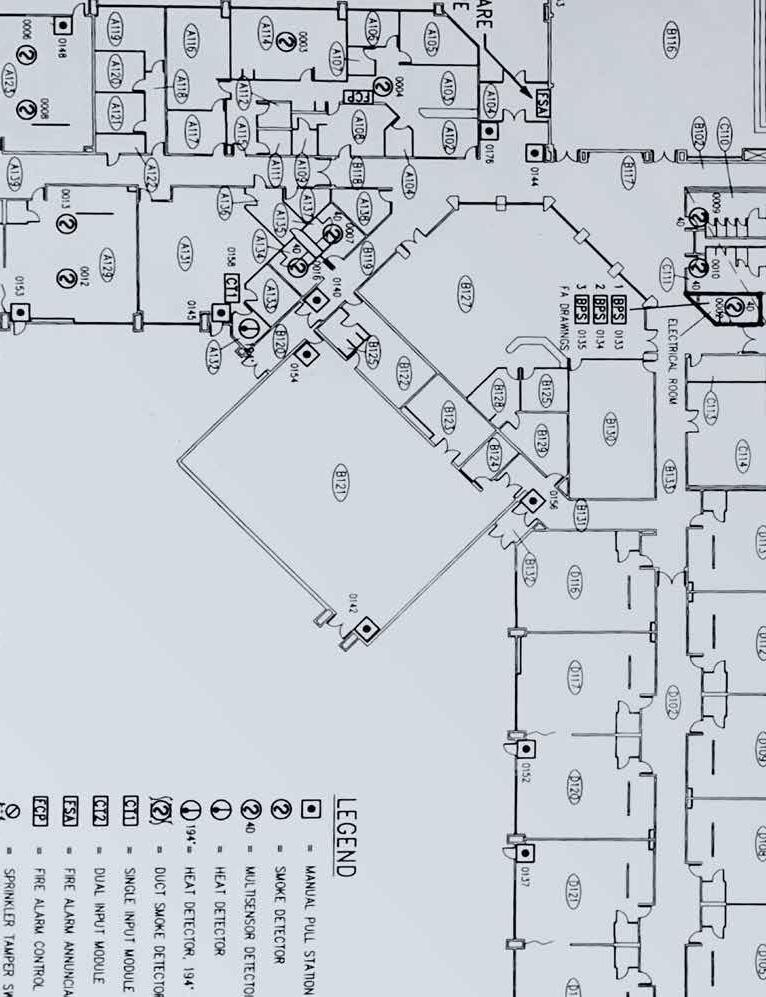



It’s difficult to distinguish the O’Connell Bridge from the Sitka Harbor shoreline, which is remarkable considering the bridge is 1,255 feet long and towers more than 150 feet over the Sitka Channel. Among the vast commercial fishing fleet and hundreds of charter and recreational vessels berthed on the east side of the strait, the iconic cable-stayed bridge comfortably blends into its idyllic surroundings.
The bridge’s harp design features a trio of cables suspended to the deck in each direction from high atop two sets of 100-foot twin towers. Running parallel to each other at an angle as they cut across the Sitka skyline, the bridge’s stayed cables can easily be mistaken at a distance for yet another series of stays hanging from the mast of a docked trawler.
That’s partly what makes this bridge so appealing. It’s a beautiful bridge, but it’s not boastful. It’s a practical piece of thoughtfully designed infrastructure that
has seamlessly woven itself into Sitka’s fabric. In many ways, the O’Connell Bridge represents the zeitgeist of Alaska’s economic development over the last fifty years. On Sunday, September 11, 2022—slightly more than a half-century after the bridge opened to vehicular traffic—the American Society of Civil Engineers (ASCE) Alaska Section designated the John O’Connell Memorial Bridge an Alaska Historic Civil Engineering Landmark.
“We always seek through the national historic civil engineering landmark program to honor these projects and the engineers who make them happen for their skills as innovators and risktakers,” presenter Larry Magura, the ASCE Region 8 Director, said during the dedication in Sitka.
“That’s honestly what it comes down to—no risk, no reward. Engineers don’t do a particularly good job of blowing their own horn and acknowledging their accomplishments, and that’s really one of the reasons we’re here
today. This is a beautiful bridge. It’s very iconic, very aesthetically pleasing. And we’re delighted to be here today to participate in putting a state historic landmark designation on the O’Connell Bridge.”
While some recognize the O’Connell Bridge as the first cable-stayed vehicular crossing in the United States, the Historic American Engineering Record among them, the bridge at the very least is the first of its kind in Alaska, “and that is a significant achievement,” said Magura, who cited a number of other cable-stayed crossings with close if not entirely discernible start dates, hence the ASCE’s hesitation toward christening the bridge a nationally historic landmark.
If the Alaska Department of Highways bridge designers had their way in the ‘60s, the “first” would’ve been undisputed. Roy Peratrovich Jr. and Dennis Nottingham, the co-founders

of PND Engineers, Inc. and key members of the O’Connell’s bridge design team, pitched the idea of cablestayed crossings years earlier for both the Susitna River and Copper River crossings.
“I had proposed the first one in 1962 when I had just come back to Juneau in ’61,” said Peratrovich, who was born in Southeast Alaska and earned his civil engineering degree in Washington State in the late ‘50s. “That’s when I submitted the drawing of the Susitna River Bridge—1,000 feet across, two twin towers, a 500-foot middle span. It would’ve worked, but it was way too early. My chief bridge engineer… he was sitting down at his table working over something. I came in with my drawing of the cable-stayed, and he looked at that and started shaking his head, looked up at me over his glasses and said, ‘Roy, it’s too early.’”
Peratrovich stowed the cable-stayed bridge idea in his back pocket. He was eventually promoted from Department

 From left to right: Bill Gute, Roy Peratrovich, Dennis Nottingham, and Department of Highways Commissioner Robert Beardsley— key members of the ‘60s bridge design team.
Alaska Department of Transportation & Public Facilities
From left to right: Bill Gute, Roy Peratrovich, Dennis Nottingham, and Department of Highways Commissioner Robert Beardsley— key members of the ‘60s bridge design team.
Alaska Department of Transportation & Public Facilities
of Highways Bridge Design Section squad leader to section head in 1969.
“Back in ’69, when we started looking at alternate crossings for Sitka—what type to use, where to put it, how would it fit in with existing situations and future improvement to harbor work and all that—I had this cable-stayed, and I said, ‘That would be ideal there.’”
Peratrovich finally got his wish. As design squad chief, his bridge design team included Bill Gute as the design and plan preparation lead and Nottingham on design check and final structural analysis. Fred Kohls was the computer section lead, assisting Nottingham with one of the first computer-aided structural engineering designs in Alaska history.
“We didn’t have the computer programs yet,” said Peratrovich, who deferred to Kohls, Nottingham, and the Department of Highways’ new IBM 1130 Computing System unfortunately titled STRESS: an acronym for its Structural Engineering System Solver software.
“We had this paper-fed thing; you get this pile of responses and answers in this thing on folded paper that you’d pull out and spread all the way down to Seattle if you let it,” Peratrovich said. “It was just so much paperwork that you gotta go through; it just didn’t have the capabilities for doing structural work that was needed on this job. There was so much deflection analysis that had to be made because you had different deflection capabilities at different points where the cable was attached. It was pretty complicated, but Dennis figured out a way to do it.
“Later on, when the improvements were made on structural analysis, we went back and checked it again,” Peratrovich said, “and, sure enough, it was still working.”

The project was overseen by Department of Highways Commissioner Robert Beardsley. The winning bid for the project was $3.2 million in 1970; construction was completed in 1971. Beardsley was succeeded in 1972 by Commissioner Bruce Campbell, who presided over the O’Connell Bridge’s grand opening on August 19, 1972. None of the bridge design team members were present at September’s dedication. Peratrovich, who founded PND with Nottingham in 1979, spoke to PND about the O’Connell Bridge design
in 2019 during the company’s 40th anniversary celebration.
“I’ve been with the department for twenty-two years, and I love these kinds of projects,” current Alaska Department of Transportation & Public Facilities (formerly known as the Department of Highways) Commissioner Ryan Anderson said at the ceremony. “There are so many stories. Whenever you work in the transportation industry, you look around at everything that was built, there are stories everywhere. This project in particular—with the innovative design and the way that people thought about this in 1972 when they built it— really is an example for us as a state, as the Department of Transportation, of how we want to move forward.”
Alaska State Senator Bert Stedman, who has represented Southeast Alaska in the state legislature since 2003, graduated from Sitka High School in 1974. He was 16 years old when the bridge opened.
“When they built the bridge, it was pretty exciting in town,” Stedman recalled during the ceremony. “I happened to have [spent] that summer fishing out of Petersburg and bought a car when I got home. So, once it got shipped up here and I got to drive over this bridge—that was a couple of months after it was built, of course—but it was a big thing for the kids at the time to be able to drive over to Edgecumbe [on Japonski Island] and back. I think the police stayed over here [on Baranof Island], so we kind of enjoyed that until they figured it out.”
The resulting benefits of the bridge, however, were no laughing matter; its presence remains a boon to the City & Borough of Sitka today.
“When we look at this economic development, once the bridge was done, there’s been construction over on Japonski for almost fifty years straight, and you can really see it today with the hospital going on and the expansion of the Coast Guard,” Stedman said. “Without the bridge, my guess is Mount Edgecumbe High School wouldn’t be there; the hospital would probably be in Juneau. The Coast Guard would probably still be there because they like the seclusion and the location, but it was really an anchor point in the
“Back in ’69, when we started looking at alternate crossings for Sitka—what type to use, where to put it, how would it fit in with existing situations and future improvement to harbor work and all that—I had this cablestayed [drawing], and I said, ‘That would be ideal there.’”
Roy Peratrovich Jr. Co-founder PND Engineers Roy Peratrovich
Although many attribute skilled labor and trade shortages in Alaska and the United States to the Great Resignation following COVID-19, it has unfortunately been an industry topic for over a decade. Across all fifty states, money for infrastructure projects is left on the table because of the skilled labor shortage, and in Alaska, the lack of skilled labor is critical, as infrastructure funding is crucial in a state that lacks modern necessities, like roads and sanitation in rural communities.
Understanding younger generations will help industry leaders develop a long-term approach to attracting future laborers. While Millennials and Generation Z get a bad rap for their lack of what other generations label work ethic, the truth is that they have a work ethic. They just value their contribution to the workforce differently. Research indicates that the younger generations entering the workforce value a sense of meaning over the size of their salary.
Step one is engaging with the younger generation on why they should consider a career as a laborer. Industry leaders should consider developing campaigns to encourage the next generation to consider this career path by developing strategies to reach the future workforce by targeting them on platforms they regularly utilize with short, powerful stories highlighting the work’s importance.
But that can’t be the only step. Growing the next-generation laborer workforce will require a long-term plan. This plan will require overcoming several misconceptions about careers as laborers. It begins by celebrating industry successes and illustrating the history of building Alaska rather than just telling the “now” story. Alaskans are known to have grit. They are rugged and hard-working and both brilliant and resilient. From Alaska’s first people to those who have chosen to make Alaska home, we build roads, structures, and communities. The history of Alaska is very much the history of skilled labor, which evokes pride. To attract the next generation, that pride must be felt and celebrated.
What are some of the misconceptions about a career as a laborer?
Lack of advancement opportunities: FALSE. Many of our current leaders started as a laborer.
Physically demanding: TRUE and FALSE. This depends on the field and technology utilized.
Not for women: FALSE. More women are seeking careers in construction and trade, recognizing the balance afforded them when managing careers and families.

Low paying: FALSE. Skilled tradespeople have earning potential exceeding six figures.
Unrewarding: FALSE. Taking part in connecting communities and building infrastructure is highly rewarding.
After you have dispelled these misconceptions, the industry needs to create programs that introduce youth to skilled labor since schools no longer offer introductions to shop, woodworking, and other trades. It is now up to industry leaders to introduce skilled trades. Leaders and workers must volunteer in schools and youth camps and be willing to create mentorship and internship programs. Advocate for our future!
Recruitment for skilled workers must include a campaign celebrating the work’s intrinsic value, not just the monetary benefits. During a recent engagement, a client faced a shortage of workers that resulted in delayed or canceled services. To help this client, we developed a campaign that leveraged current employees to share their experiences and to function as ambassadors to generate genuine interest, resulting in new applicants. Gone are the days of standard recruiting. Recruiting today is about campaigning for action.
more information about People AK, please visit peopleak.com. or call 907-276-5707. For
For
economy to get this bridge built, and we’re reaping the benefits now.”
Sitka Mayor Steven Eisenbeisz echoed Stedman’s remarks: “We heard earlier about all of the economic activity that can happen on Japonski Island because of it, and that is on both sides of the island,” he said, referring to Baranof Island where the town center resides. “I don’t think it would be possible without this landmark here in Sitka.”
The dedication was two years overdue. Wheels were in motion for a 2020 dedication until the COVID-19 pandemic canceled all plans, travel and otherwise. The bridge’s merits were brought forth to the ASCE
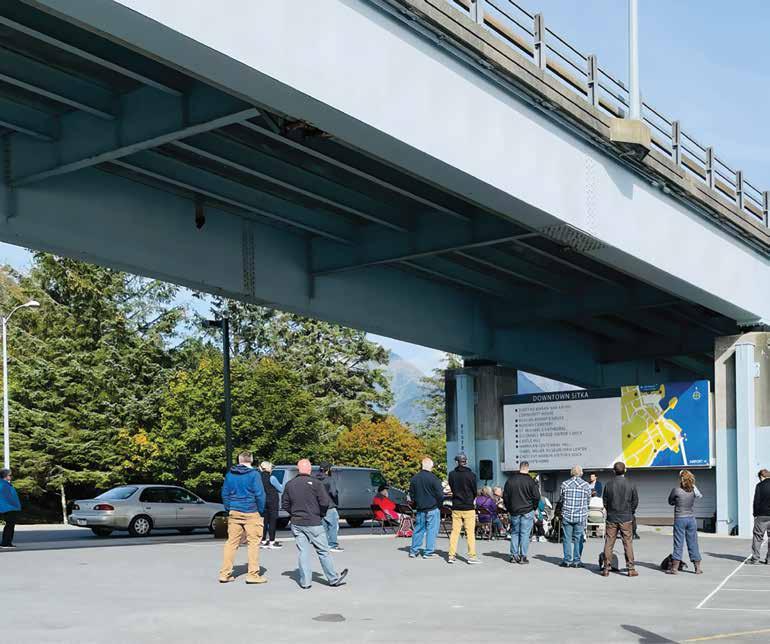
Alaska Section by Nottingham, who unfortunately didn’t live long enough to see the dedication come to fruition; Nottingham died March 6, 2022.
“I’m happy to be here to bring this recognition on his behalf,” said David Gamez, the event’s emcee and a past president of the ASCE Alaska Section.
The ceremony was held beneath the bridge’s composite steel reinforced concrete superstructure, between the substructure’s piers on the east side of the bridge. While the traffic busied itself at its usual pace overhead, the O’Connell Bridge Dock gently creaked and swayed in the background, rolling with the ocean waves. It was a gorgeous day—60°F, sunny, a light breeze. The roughly two dozen folding chairs set up for the event didn’t come close
to accommodating the attendance, which numbered around fifty people. Over the crowd’s right shoulder was Crescent Bay; to the left, Castle Hill. It was fitting the ceremony took place in the shadow of the Baranof Castle State Historic Site, the national historic landmark where Russian Alaska was formally handed over to the United States in 1867.
Gamez was ticking off a number of the challenges the bridge design team faced in successfully completing this project—the high seismicity, climactic conditions, the technology at hand, and the bridge’s proximity to Castle Hill not the least among them. “In my opinion, it didn’t hurt Castle Hill,” Stedman said. “It’s just part of the community. The bridge blends in very well; the designers
On September 11, 2022, the American Society of Civil Engineers Alaska Section designated the John O’Connell Memorial Bridge in Sitka as an Alaska Historic Civil Engineering Landmark.did an excellent job.”
The bridge is a bit of an enigma. Approach it from Japonski Island in the west, and the bridge presents itself as an imposing figure in front of its Sitka Harbor and Mount Verstovia backdrop. It’s one of the first things visitors see, a striking landmark welcoming them to Sitka. Approach it from Baranof Island in the east, and the bridge humbly defers to Castle Hill and Sitka’s rich history, content to rest in the shadows. The road slowly climbs and winds its way out of town, as the bridge says “thank you for coming”. It’s a hard phenomenon to explain, even for the locals.
“A couple things come to mind when I think of this bridge, one of them is obvious and one of them
is not necessarily so obvious,” said Mayor Eisenbeisz, who spoke last with impromptu remarks. “The obvious one is this bridge is in just about everybody’s pictures. It’s in one or more drawings that you’ve done in the past. This bridge really is a landmark to Sitka, and Sitkans really do gather around the image of this bridge. So, I want to thank the people who spent the time designing it and thinking of the aesthetics of this, as well, because it does blend in so well with our community. In fact, it’s a focal point on our new city seal, which was recently redesigned. So, that’s how important this bridge is to Sitkans, whether or not they think about it every day.
“Which is my other less obvious point. I don’t know how many times
a day you drive across this bridge, but you just really don’t think about it. It’s just there. It just happens to be there— you drive to the hospital, you drive to the airport, you drive to the harbor, whatever your business on the other side of the island, you just cross the bridge. No big deal.”
An enigma.
“I’m going to think about that a little bit more every time I drive across this bridge now,” he said, “what a convenience and what an asset it really is to Sitka.”

“This bridge really is a landmark to Sitka, and Sitkans really do gather around the image of this bridge. So, I want to thank the people who spent the time designing it and thinking of the aesthetics of this, as well, because it does blend in so well with our community.”
Steven Eisenbeisz Mayor City and Borough of Sitka
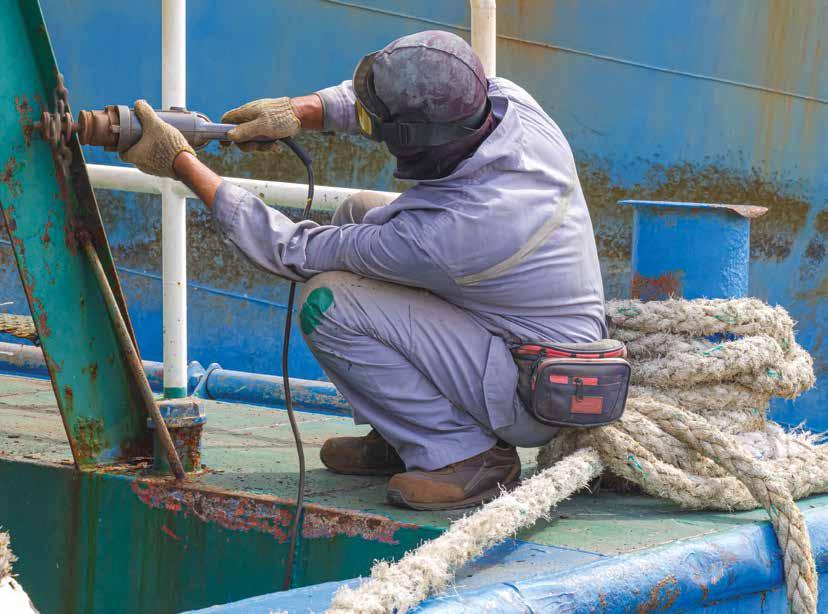 By Vanessa Orr
By Vanessa Orr
Just as the wood siding on a house will deteriorate if it is not painted or treated, the steel used in pipelines, buildings, machinery, and more will corrode if not protected from the elements. The most common cause is electrochemical reactions. Galvanic corrosion is when different kinds of metal are in contact with one another; electrolytic corrosion occurs most commonly when water becomes trapped between two conductors that have an electrical voltage between them, creating an electrolytic cell.
“There are four elements to a corrosion cell: anode, cathode, electrolyte, and a metallic path. The goal is to try to reduce or eliminate one of the four items that makes up that cell,” explains Cynthia Cacy, corrosion control engineering principal at Coffman Engineers. “Applying a coating, for example,
removes the metal from contact with the electrolyte, or you can change the corrosion cell by introducing a cathodic protection system.”
For the latter case, Cacy gives the example of a water tank in someone’s home that has an anode screwed into the top of the tank. Because the anode is more reactive than the steel of the tank, it will corrode preferentially instead of the tank corroding.
“A cathodic protection system can be applied to any metallic structure, including pipelines, docks, offshore platforms, and tanks," she explains. “Boats have cathodic protection systems, and there are companies that specialize in designing cathodic protection systems for bridges.”
Depending on the object that needs to be protected, there are different corrosion control methods or
approaches. In some cases, corrosion can even be prevented by choosing a noncorrosive material during the design stage.
“In older homes with copper piping, homeowners may experience pinhole leaks, which can become a nightmare,” says Cacy. “Newer construction uses various forms of plastic pipe that aren’t susceptible to corrosion.”
Knowing what kind of systems can help prevent corrosion is a specialty of Coffman Engineers, which provides cathodic protection system design, commissioning, monitoring, and maintenance for new and existing structures for the oil and gas industry, water/wastewater, federal, utility, and commercial markets.
“We do this as part of the design process,” says Cacy, adding that each client may also have its own specific
guidelines or regulations that are required for corrosion control.
“The types of coatings recommended can depend on where you are putting the structure and how compatible the coating is with the environment it will be in,” says Cacy. “Some coatings don’t cure and adhere at really cold temperatures, so if you’re putting it on in the field, you wouldn’t use it in Alaska. For this and many other reasons, when possible, coatings are shop-applied, though there may be some touch-up work done later once the structure is in place.”
Engineering firm Michael Baker International also specifies the types of corrosion products and methods that should be used on everything from the pipelines on the North Slope to marine

and dock structures at the Port of Alaska in Anchorage.
“The pipelines that we specialize in are unique compared to those in the rest of the country, so we may use some of the same coatings but for different purposes,” explains mechanical engineer David Stamp. “In the Lower 48, most pipelines are buried in the ground, which creates one set of corrosion problems. On Alaska’s North Slope, ours are above ground, which presents another set of corrosion challenges that requires a different approach to corrosion protection and coatings.”
Historically, pipelines were insulated with polyurethane sprayed between the sheet metal jacket and the pipe.
Shane Hadaller, President, Mericka GroupWhile this was at first thought to be adequate to protect it from corrosion, over time the polyurethane would fail and allow water to get through the insulation and create CUI, or corrosion under insulation.
“The modern approach is to apply fusion-bonded epoxy to the pipe before it is insulated, which provides a protective barrier when the polyurethane fails, protecting the pipe from any water that could penetrate the insulation,” says Stamp. “This is typically applied in the shop environment, as this type of epoxy requires specific temperature and cleanliness requirements that need to be controlled.”
While Stamp says that modern pipe doesn’t require much maintenance,
PROVIDING A FULL CONTINUUM OF INNOVATIVE SERVICES TO RESTORE AND ENHANCE OUR NATION’S INFRASTRUCTURE
“People sometimes think that corrosion control is just painting over a surface and don’t understand what an intricate industry it is.”
pipes on the North Slope that have not been treated this way require a lot more effort to maintain.
“North Slope operators spend tens of millions every year removing existing polyurethane to expose corrosion,” Stamp says. “This is a huge problem for all lines built before the ‘90s.”
While operators do have to replace old lines that are too far gone, the more economical choice is to strip the pipes of old insulation and apply a coating to mitigate damage to that location. “CUI is an aggressive corrosion mechanism that can lead to pipe failure in three to five years, which is why most operators go through their inventory of lines that are susceptible, inspecting most if not all on a three- to five-year cycle,” says Stamp.
“People sometimes think that corrosion control is just painting over a surface and don’t understand what an intricate industry it is,” says Shane Hadaller, president of Mericka Group in Kenai. “You need to have very knowledgeable people who have experience working with paints and abrasives—who understand the different chemical components, the pot life, product data, mixing hazards, how to spray with PSI, and more.”
Mericka Group provides preservation and insulating services for a number of industries, such as corrosion control on fuel tanks, ships, bridges, oil platforms, military installations, and more.
“It’s not just something you spend a couple thousand dollars to hire people to do,” Hadaller adds. “It’s an expensive process that requires specialized equipment, like a $100,000 blast pot that contains sand for blasting.”
He notes that training in this field is very rigorous, and only two or three companies in Alaska, including the Mericka Group, are qualified to do QP1 and QP2, the highest painting and blasting industry standard used for asset integrity in the military.
According to Hadaller, 90 percent of corrosion control is preparation, which includes making sure that items that can corrode are thoroughly treated before they head to the field. When steel comes out of the factory, for example, it has a black sheen that
needs to be blasted away to create a porous surface on which to apply corrosion treatment.
“We blast the black sheen that covers the pipe to SP7 or SP10 [surface preparation standards in mils, or thousandths of an inch], and then apply a three-coat paint process over the surface,” says Hadaller. “Each paint— the primer, mid-coat, and topcoat—will have specific specifications for mils, with a total overall thickness of 12 to 18 mils. Painting can take anywhere from eight to twenty-four hours, depending on drying time.”
While most corrosion paints are specified to have a fifteen- to twentyyear lifespan, durability depends on where the products are used. While water, salt, and wind shorten a paint’s lifespan, Hadaller says that ultraviolet sunlight is actually one of the biggest problems.
“Alaska is a very harsh environment, and most of our work is done on industrial infrastructure that is constantly being used and abused,” says Hadaller. “On a scale of one to ten, I would rate Alaska an eight. A ten would be something like a Navy ship, or tanks in the middle of an Arizona desert in 110°F temperatures.”
For this reason, he adds, the US Navy has one of the biggest corrosion programs in the world, spending $3 billion each year to protect its ships, which are repainted every five years.
While calculations can help forecast when corrosion might occur, many factors affect the rate, including the environment, whether a coating was applied in the field or the shop, and whether there is already something wrong with the structure, such as a bad weld. There are industry, state, and federal regulations that provide guidance and regulation, including the Association for Materials Protection and Performance, the Alaska Department of Environmental Conservation, and the Pipeline and Hazardous Materials Safety Administration, which provides federal oversight for the oil and gas industry.
Because controlling corrosion is a constant battle, companies are always trying to find new methods, products, and technologies to make identifying and mitigating corrosion easier.
“Coatings are improving every day, as improved chemistry and a better understanding of corrosion problems enables companies to make better coatings for specific applications… Many of the advances made have also been focused on the inspection technology side, helping operators find and address corrosion.”
David Stamp
Mechanical Engineer
Michael Baker International
“Coatings are improving every day, as improved chemistry and a better understanding of corrosion problems enables companies to make better coatings for specific applications,” says Stamp. “Many of the advances made have also been focused on the inspection technology side, helping operators find and address corrosion.”
While operators have historically used X-ray technology to see through pipes to determine where corrosion has started—a process that is done by hand—robotic "crawlers" are now being used to search for problem areas.
“Inspectors used to have to set up an X-ray source and detector every foot or two along the pipeline, which
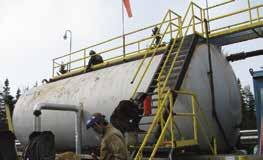
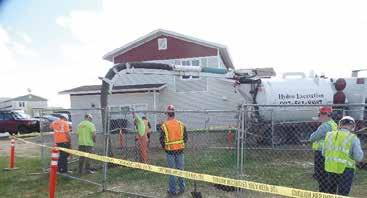
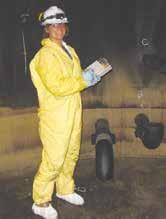
was a time-consuming and expensive process,” says Stamp. “This led to the development of robotic crawlers that move along the top of the pipe, taking X-rays as they go. In some cases, you can actually see where the insulation has gotten wet but not yet corroded the pipe, which allows operators to prioritize that area for additional inspection or to remove the insulation before the pipe is damaged.”
Monitoring has also been simplified through remote data collection capabilities that allow companies like Coffman Engineers to make sure that cathodic protection systems remain operational. “Remote monitoring has really been embraced in Alaska because,

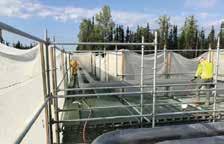



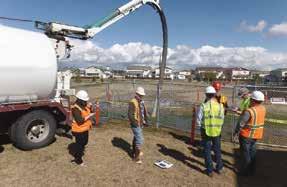
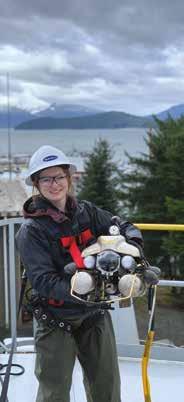
instead of investing a lot of time to travel to remote cathodic protection sites, you can review data more frequently from data transmitted remotely,” says Cacy.
Companies have also become more proactive in preventing corrosion by incorporating corrosion mitigation methods into new construction designs. “If you are constructing a new structure or pipeline, it is much more cost effective to add cathodic protection at that time instead of pushing it to the back burner and worrying about it later,” says Cacy. “It’s like spending money now to paint a house or waiting several years to buy new siding; investing in corrosion control early can make an asset’s lifespan much longer.”
 By Vanessa Orr
By Vanessa Orr
When Jon McNeil and Nicole Cusack decided to bring a ramen restaurant to Anchorage, they pictured a small, cozy place where they could share their love of phenomenal food and high-level craft cocktails. Instead, they fell in love with a historic three-story, 6,000-squarefoot building downtown that provided more than enough room for a growing restaurant—but also enough design challenges to match the space.
Now one of Anchorage’s hot spots with a two-month or more waiting list, Whisky & Ramen was a labor of love that McNeil, a dentist, and Cusack, a lawyer, can look back on with pride. But renovating the space took a lot of effort as well as innovative design solutions.
“We had no idea how big it was when we first saw it; it was just a great old concrete building that had a ton of history, including surviving the 1964 earthquake,” says McNeil. “Instead of seeing it destroyed like a lot of old buildings are, we decided to buy it so it didn’t get wasted.”
Once they started exploring their new purchase, the couple realized that much of its unique architecture had been hidden by older finishes. While the front part of the building had been built more than a century ago, the back part of the building had been added in the ‘60s. In its many iterations, it has served as a photo studio for famed Alaska painter Sydney Laurence, the home of Stoltz Electric Co., an antique store, and later a mercantile.
The back part of the building was made of board formed concrete, which the couple were able to preserve in the modern renovation. “There aren’t a lot of concrete buildings like this anymore,” says McNeil, noting that it can be cost-prohibitive to use this type of construction method in modern facilities.
It took them a couple of years to strip the building, in part because the entire façade had to be seismically upgraded to meet modern earthquake codes. Steel beams were installed behind the brick façade, which was reattached to the original concrete back of the building that was already up to code.
“While most historical buildings are grandfathered in, because we went from mercantile use to restaurant use, our project fell under current codes, which made the renovation even more difficult,” says McNeil, adding that, in addition to meeting municipal codes, the entire building is now ADA-compliant.

Because a lot of the building is below grade, the renovation had to utilize the existing sewer line and plumbing lines, incorporating their path into the design of the restaurant. McNeil and Cusack were also able to maintain the original elevator shaft and expand it, though at one point that meant hand-digging to get it to the right depth.
“One of the biggest challenges in the renovation is that every inch counted. For example, when we worked on the bathrooms downstairs, it was originally framed three inches in the wrong direction, which threw off the entire layout,” says Cusack. “We ended up flip-flopping the men’s and women’s rooms.”
Upstairs also was a squeeze. “In order to meet codes in the bar, we had to custom-build the faucets into the vertical columns of the bar to make them fit,” she continues. “The tolerances were within inches.”

In addition to keeping the concrete shell, the couple was also able to reuse the brick in the building. However, that commitment to sustainability involved spending an entire summer cleaning the concrete. “It was definitely a labor of love,” says McNeil.
Because the original building had not been designed to house a restaurant, the renovation involved more specific issues to comply with health standards and increased efficiency.






“One of the hardest challenges was figuring out how to get the food out; we use custom-made carts with huge rubber wheels, and these had to be able to roll over the transition at the elevator without jostling the food,” says Cusack. “We also had to get the bar and bar seating to work so that servers could get the carts out of the elevator and through the bar into the dining room. What we’ve got is quirky, but it works.”
The carts are a key part of the restaurant’s operations. “Keeping the elevator was a good pivot for us. It’s

“While most historical buildings are grandfathered in, because we went from mercantile use to restaurant use, our project fell under current codes, which made the renovation even more difficult.”
Jon McNeil, Co-owner, Whisky & Ramen
not only more efficient but adds to the safety factor because servers are able to roll bowls of soup to the tables instead of carrying them,” she adds.
The couple also decided to put heat in the floors, which meant upgrading a boiler from the ‘70s that was working at about 50 percent efficiency.
“We use a lot of electrical appliances and equipment because we make everything from scratch,” says McNeil. “So we decided to go with a turbine-based system that uses natural gas to produce all of our electricity and also puts off heat that is recycled back into the floors and to heat water.”
The 65-kW microturbine CHP system (combined heat and power), which cost $237,000, runs at 80 percent efficiency and will pay for itself in roughly four years. Edwards Construction Group of Ridgefield, Washington installed the microturbine on the restaurant’s roof with equipment distributor Arctic Energy overseeing the technical aspects.
The couple hired Daniel Clift of Determine Design, who originally met them on site when the building was still being used as a clothing outlet.

“In addition to figuring out a way to work with the existing concrete structure, we needed to find a way to make the building accessible, to get it to flow, and to create a restaurant in there,” says Clift. The design puts kitchens on the middle


“While most historical buildings are grandfathered in, because we went from mercantile use to restaurant use, our project fell under current codes, which made the renovation even more difficult.”
Jon McNeil, Co-owner, Whisky & RamenInside a Fourth Avenue storefront that painter Sydney Laurence once used as a photo studio, Jon McNeil and Nicole Cusack spent years stripping the interior to its concrete shell.













“I’ve worked on restaurant remodels before, but this one was uniquely challenging… It had such extensive remodeling requirements teamed with high design priorities, added to the technical challenges of working within the concrete structure.”
Daniel Clift, Owner, Determine DesignLocal artisans like Lugo Upholstery, which supplied the Scottish-inspired seat fabrics, and Tasha Jeffries, owner of Labrador Tea who designed some of the wallpapers, added their expertise to Whisky & Ramen’s interior design.
and lower levels, as well as office and employee space on the third floor.
DCI Engineers was brought in to analyze the building and come up with shoring solutions, which included creating new beams and supports to reinforce existing openings and the elevator shaft. Finding space for the sprinkler system, as well as designing ways to fit air ducts into the walls discreetly, were added concerns in the design.
“I’ve worked on restaurant remodels before, but this one was uniquely challenging,” says Clift, who was involved with the project for six years. “It had such extensive remodeling requirements teamed with high design priorities, added to the technical challenges of working within the concrete structure. It was the longest project I’ve worked on to date and it’s also the one I’m most proud of.”
The couple’s goal to add contemporary finishes meant sourcing unique high-end materials, including clear birch wood, specially designed wallpaper, and historic brick.
“All of the brick is from an early 1900s Portland firehouse that was torn down that we had shipped up,” says Cusack.
One of the more fun elements is the tree in the middle of the floor that not only serves as a focal point but symbolizes the Alaska/Japanese/Nordic style that the couple envisioned.

“The tree is from Alaska, but we used a traditional Japanese technique to burn it with oil to harden it,” says Cusack. “We did it in the yard and brought it through before the doors were on the front; our contractors were super annoyed with us because then they had to build around the tree.”


In addition to the airy, elegant restaurant area, guests can wander into the whisky bar, which sports a darker, warmer, more traditional look. The wallpaper was designed by Alaskan artist Tasha Jeffries, owner of Labrador Tea, and features Alaska topography and the floatplane that Nicole grew up in, flying with her father. Alaska wildflower wallpaper, also by Jeffries, adorns the women’s restroom.
Ben Campbell of Campbell Painting & Drywall installed the wallpaper after www.akbizmag.com
finishing the drywall work and priming and painting the exposed brick. He spent about six months on the project, working on different phases as the design came to fruition.
“Some of the wallpaper was customdesigned and some was imported from overseas, so we took our sweet, sweet time. If you mess up, it’s hard to get extra,” he says with a laugh.
Cusack and McNeil designed all the bar seating themselves, and Gasser
Chair Co. of Youngstown, Ohio made the custom chair frames. Anchoragebased Lugo's Upholstery did all of the upholstery and spent months creating the bar and bench seating using leather imported from Italy.
“The leather was very thick and hard to work with, and I spent nights awake thinking, ‘How are we going to do this?” says owner Hermilo Lugo. “We had to keep playing with the leather and soak it at night to soften it up so we could
create the beautiful diamond patterns that Nicole wanted.”
Kristy Knutson, business manager for Lugo’s Upholstery, says of Cusack, “She definitely had a vision in her mind, and everything in the restaurant shows her specific touch, from the artist-designed wallpaper to the seats made of green tufted leather and Scottish wool.”
The upholsterers had to work around the brick columns and concrete structure to make everything fit, and Lugo says that they poured their heart and soul into creating a stunning space.

“We worked on it day and night, seven days a week, twelve hours a day,” says Lugo, “and it turned out beautifully. We’re really proud of our work.”
Those who took part in the remodel are not the only ones who have been impressed by the couple’s commitment and vision. Both the chef and the head bartender heard the buzz about the remodel and approached the couple about working there, as they wanted to be a part of the final product. Customers have consistently given rave reviews not just about the food and craft cocktails but the space as well.
“People have been very responsive and kind about Whisky & Ramen; there’s a real excitement and energy about it,” says Cusack. “That’s been super rewarding for us. When you build something, you hope people appreciate it, but they really get it. They see every detail, every inch that we were painstakingly focused on.”
“We were burnt out at the finish line, so it’s wonderful that the response has been so overwhelmingly positive,” McNeil adds, noting that the restaurant grew from zero to forty employees within two months. “You don’t realize how hard it is to get a restaurant and bar with high-level craft cocktails up and running. Restaurants in general have a lot of demands, and then add to this the cost of renovating a historic building in Anchorage.”
McNeil laughs as he reflects on the scope of the project. “We’re very happy with the final product,” he says, “but starting from our original idea of just creating a small ramen shop—it kind of snowballed.”
“The tree is from Alaska, but we used a traditional Japanese technique to burn it with oil to harden it… Our contractors were super annoyed with us because then they had to build around the tree.”
Nicole Cusack, Co-owner, Whisky & RamenDaniel Clift of Determine Design poses behind his partner, James, at a tour and tasting event ahead of a soft opening last summer.
The eVinciTM microreactor battery is easy to transport, install and operate. That makes it easier for you to bring safe, reliable, a ordable and clean energy to even the most remote of locations.
• Transportable energy generator, targeting 30-day onsite installation
• Cost-competitive lifecycle, 100% factory built and assembled
• Delivers combined heat and power, 8+ years without refueling



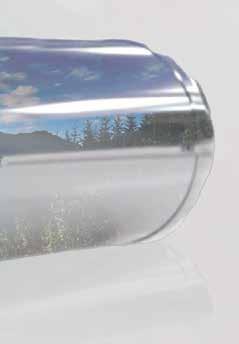
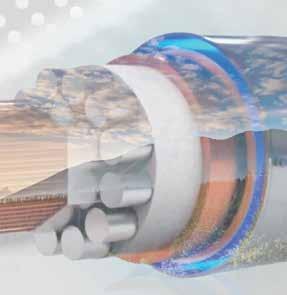
To learn how we’re shaping tomorrow’s energy, visit: www.westinghousenuclear.com/eVinci

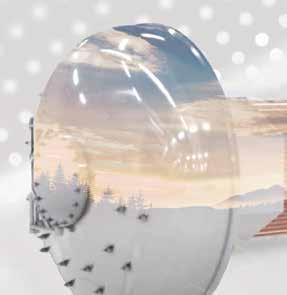


In mid-2022 Stantec President and CEO Gord Johnston visited Alaska to meet with clients, partners, and Alaska Stantec employees. He generously carved out time for an interview with Alaska Business Managing Editor Tasha Anderson, in which they talked about the company and Johnston’s role and vision for leading Stantec in continued growth.
Tasha Anderson: What’s a little bit of Stantec’s history, and how did the company come to Alaska?
Gord Johnston: The history of Stantec dates back to the mid-‘50s. We were started by a one-man show, his name was Don Stanley, from Edmonton [Alberta, Canada], which is where our head office is now… He came out of [Harvard University] with what

they called at the time a doctorate in sanitation engineering and an offer to play professional hockey for the Boston Bruins. While professional hockey sounded interesting, he wanted to start an engineering company.
So he started Stanley Associates Engineering, although there were no associates [ he laughs].
The western Canadian economy, particularly Alberta, is resource dependent, so Doc Stanley (as we called him) would build up to 200 people when times were good, and then he'd go down to 50, then he'd go up to a 1,000, and then he'd go down to a couple hundred. Over time he said, "I have to diversify from water and wastewater.”
They started doing buildings engineering and then oil and gas work,
environmental work, architectural work, and so on. The company grew across Canada, and then in the early ‘90s we moved into the United States and acquired our first company in Phoenix, which was a land development company.
When we moved into the United States, we wanted to register the name Stanley Engineering, but there was one already. That's where Stantec came from, [the combination of] "Stanley" and "technology," because we do more than just engineering.
We acquired a company here [in Alaska] called USKH back in 2014, which is how we really got our presence here, and then when we acquired MWH [in 2015] they had offices here also...
And so we just kept going with
that diversification strategy, geographically mostly. Our story is one of growth, really, and it's growth both through acquisition and growth organically. We always say anybody can grow through acquisition, all you have to do is open your pocketbook, but growing organically is the real beauty…
[Even] through COVID our financial performance was record-breaking every year, and our backlog, which is how much work our clients have given to us that we haven't executed yet, is at an all-time high. Our organic growth was, over last year, almost 10 percent, and our acquisition growth is strong as well: our earnings increased by 34 percent over last year. The company is operating extremely well.
Anderson: What are some of your more unique services?
Johnston: We just acquired a firm [in 2022] that does paleontological services, so hopefully we'll call the next dinosaur they discover Stantecosaurus [he laughs]. But the reason we acquired that firm was because they're based in California. PG&E [Pacific Gas and Electric Company] and other clients there, because of the wildfires that have been sparked by vegetation touching the power lines, want to bury some of the above-ground power lines. The first thing we need to do is archeological and paleontological services along the route…

We haven't gotten into mine closure work here [in Alaska], not significantly, but in Australia we do mine closure work. In fact, a company that we just acquired there, called Cardno, was involved in helping create the specifications for mine closure in Australia and then secured the first major mine closure project there. And there's billions and billions of dollars for mine closure that people forget about…
We do a little bit of construction work; we call it ecosystem restoration. For example, maybe an area's been channelized: years ago everyone used to take a nice, naturalized stream, make it go straight, and pave it with concrete.
Anderson: Much better than nature intended it…
Johnston: Yeah, until you realize that it's not [he laughs]. We go back in a lot of these areas and remove the concrete and re-naturalize the stream, do plantings. We actually have a native plant nursery in the Lower 48—it's in the northeast—and we grow native plants and have a seed bank. When we do this type of work, we bring our plantings and native seeds from our greenhouse, and we also sell our seeds and our plantings to our competitors.

When we naturalize a stream, and then salmon come back and all these wonderful things, the client will get benefits from that, carbon sinks and so on, which they would sell. Sometimes we would buy them, because we've publicly stated our goal is to be carbon neutral by the end 2022, as a company.
Anderson: And is that on track?
Johnston: Yes. At the end of 2021, we were already carbon neutral in the UK, Europe, and I think Australia and New Zealand. And by the end of 2022 we were carbon neutral in all of our operations.
In 2022 Stantec acquired a company that provides paleontological services as an asset for clients that need to dig in areas of archeological or paleontological interest. Stantec Stantec owns and operates a native plant nursery in the Lower 48; the company uses the seeds and plantings for its own projects, as well as sells them to competitors.Anderson: What have you done to make that possible?
Johnston: A number of things. One is, of course, reducing our Scope 1 and 2 emissions. We’ve committed to a 47 percent reduction in Scope 1 and Scope 2 [emissions] from a 2019 baseline. We're also purchasing offsets. Some companies will purchase offsets just wherever they can get them, the cheapest place, but we purchase offsets in the country where we need the offset. For the UK, we're purchasing offsets in the UK, and the same in Canada and the United States. They cost a little bit more, but we think they're higher quality and they're easier to certify, because this is an area that's a bit of a wild west still.
Anderson: Clearly Stantec is environmentally minded, and some may think that sets the company at odds with some of the projects you design and the clients you work with. How do you approach balancing the need for development with protecting the environment?

Johnston: Our philosophy, 100 percent, is that development is necessary, and we just have to do all we can to minimize—you can never eliminate—
but minimize the environmental impact of this development.
If you look at the work that we do in mining (in South America, Western Australia, Arizona, northern Canada, Alaska), we need these minerals if we're going to continue to electrify, if we're going to go to electric vehicles and things… We've got to strengthen the electrical grid because the grid's not strong enough. If everyone needs to plug in their car, the grid can't take it. [For the power project in southern California], moving the power lines underground, there is a huge need for copper for these things.
It's the same mindset for the work we do with oil and gas companies. We're involved, typically, on these projects from the beginning. We’ll help from the environmental perspective; how can we minimize the impact on plants and animals; we look at geotechnical, like the ground conditions; we'll look at the slopes and the slope stability; we'll look at minimizing creek crossings, or if one is necessary, where to do that. We'll be there to work with environmental monitoring during construction. And then post construction, we're involved with
What we are going to continue to do is use our 4,500-person environmental group—20 percent of our company—to ensure that we minimize the environmental impact from all of this work. I've had people ask, "Will we, as Stantec, get out of oil and gas, or get out of our work in mining?" The answer is 100 percent no.
monitoring, as well: is there leak detection, is there slope stability issues.
So it's my approach, but also that of our company, that there's complete integration between the development and the environmental work required to support it.
We can't stop development. Where I live, in Canada, it's probably in the winter colder than it is here [in Anchorage] because you've got the buffering from the water. In Edmonton, where I grew up and where I live now, for weeks at a time -30°C temperatures are not uncommon, and some weeks are -40°C. And the only thing I need to know about minus forty is at minus forty Fahrenheit and Celsius are the same [ he laughs].
It's really cold. We need to burn fossil fuels in order to survive; there's no alternative at -40°C, so we use natural gas for the most part in Edmonton, but other places in more rural areas would use propane, they'd use fuel oil, these sorts of things. So when staff approach me sometimes and say, "We have to get off fossil fuels," I reply, "Okay, but that's not something we can do in the short term."
What we are going to continue to do is use our 4,500-person
environmental group—20 percent of our company—to ensure that we minimize the environmental impact from all of this work. I've had people ask, "Will we, as Stantec, get out of oil and gas, or get out of our work in mining?" The answer is 100 percent no.
Anderson: So how often do your personal views align with Stantec's, and have you had any tension in that space where your personal views are not exactly in line with the direction the company is going?
Johnston: No, and I think that's one of the reasons why I was selected was that I have a pretty balanced approach. Stantec is not a political company. We fully believe in diversity and inclusion. We have 27,000 people now: we have people on any issue that will be way over here and we have people that will be way over here, and they both write me emails.
Our thought has been that we're an engineering and architectural professional services company, and we don't make statements on the latest Supreme Court decision or different things like that. We provide service to our clients, and that's what we do.
Anderson: What’s a Stantec project that inspires you, on a personal level?

Johnston: We've done some massive projects and we've also done some very, very small projects. For example, we did the hydraulic design for the third set of locks for the Panama Canal, and we've been working on hydropower projects in Ethiopia…

We have 27,000 people around the world, and at any time we probably have between 30,000 and 40,000 projects that are open. Some of them are $500, some of them are $300 million. What I'm most proud of is that diversity.
We have a group right now that's putting in water and sanitation for the first time for almost 1 million people in Egypt; we have people reducing water usage in the UK; we have people doing environmental work everywhere, from bat surveys to environmental work on PFAS [polyfluoroalkyl substances] chemicals. At Stantec, our purpose is, "We create communities and we design with community in mind," so that's what I love about us, or I'm most proud of, is the wide range of projects that we do that benefit our communities.
Left: Stantec provided the hydraulic design for the third set of locks for the Panama Canal.ittle boxes made of ticky tacky need not all look the same, but they often do. Everyone has had the experience of visiting a friend’s home and recognizing the layout. Odds are the house was built from a familiar blueprint, such as the ranch or splitentry model.
One of the most popular models in Spinell Homes’ hundred-plan library is the 1452 Forget-Me-Not. “I can’t imagine that—if you’ve been in many houses, at least on the more affordable side—that you haven’t been in it,” says Andre Spinelli, president of the Anchorage building company. The 1452 Forget-Me-Not, so designated for its square footage, has been adapted as a duplex, four-plex, and six-plex, as well as stand-alone homes. Every builder has some version of it, Spinelli says.
Déjà vu designs are partly a consequence of the Pipeline Boom of the late ‘70s. “A lot of people coming to Alaska back in the day weren’t expecting to be here that long, so what happened was you got the cheapest, most costeffective house,” Spinelli explains. “People weren’t looking at it long term as ‘my forever home,’ and that’s what you see around Anchorage.”
The 1452 Forget-Me-Not “has been around since before I moved to Alaska, and it still gets built today. Granted, we update things and make tweaks,” Spinelli says. He credits Karen Cushman with drawing probably more house plans in Anchorage than anyone.
Rapid explosions of home-building are more infrequent these days. Spinelli has to think back to a recent housing development at Joint Base ElmendorfRichardson. “There’s five models of houses, and we’re gonna build 150 of these things,” he recalls. “My plumber told me, ‘Oh man, we got so good and so fast and efficient… You need to do this.’ And I was like, ‘Yeah, tell that to the home buyers.’”
As much as contractors would appreciate an assembly-line process, homes just aren’t built that way anymore. Spinelli’s experience has taught him that much. “I’m a design geek, so I think every lot has a plan that fits it, depending on slope, topography, views, access, or this or that,” he says.
Institutional buildings will reuse blueprints, especially where governments want low-cost functionality. For example, the Anchorage Fire Department has three stations with the same floor plan. Fire Station 7 in the Jewel Lake neighborhood was replicated as Fire




Stations 14 and 15 on Campbell Airstrip Road and Southport Drive, respectively.
“The idea wasn’t necessarily to develop a prototype fire station,” says James E. Dougherty, managing principal for Alaska at RIM Architects. “The fire department really saw this as a good platform for a fire station and thought, ‘That’s pretty good. Rather than reinvent the wheel, why don’t we just do our next one the same.’”
Efficiency comes from encountering problems during the first build that can be avoided in subsequent builds. “They find something that works, and then they can build repeat models,” Dougherty explains. “Most things you build are one-offs, and you’re not able to capitalize on lessons learned from your first.”



Prototypes have saved costs for the Anchorage School District in the long term, as well. “There is some economy of maintenance in the downstream. You get a common floor plan with common elements, it’s easier for them to get in quickly and know what they need to do,” says Edie Knapp, the district’s construction supervisor.
Anchorage began dabbling in prototypes in the ‘60s, with schools like Campbell and O’Malley Elementary sprouting from the same seed but diverging in their final forms. Dougherty says the district had a tradition of drawing from prototypes, and oneoffs have been the exception. By the ‘80s, the district was using identical, or mirror-reversed, plans for Klatt, Spring Hill, Bear Valley, Ravenwood, and Fire Lake.
Larry Morris, the district’s planning and design supervisor, notes that maintenance for the fleet of buildings generally follows a predictable schedule as similar parts wear out. Commonality also helps the buildings’ users. “As teachers and principals move from school to school (and it could be for all kinds of staff, even custodians that move from a school to another school), if it’s similar, the learning curve gets a lot shallower,” Morris says.
Morris previously worked on school designs for the Fairbanks North Star Borough School District in the ‘80s and ‘90s. “Fairbanks had their own prototypicals that started with Badger
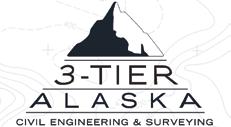
NEPA Compliance Audits & Permitting
Environmental Site Assessments
Environmental Impact Statements
Permitting & Regulatory Compliance
Wetlands Jurisdictional Determination Report
Wastewater Treatment System Design & Permitting
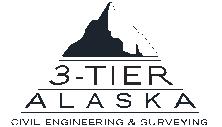


Drinking & Storm Water System Design & Permitting

Spill Prevention, Response & Site Remediation

“Even if you want to build the cheapest building, it’s still likely a better value to approach it for its intended purpose rather than fit it into a generic box.”
Karen Zaccaro Senior Project Manager Stantec
Road Elementary. They built seven of them,” he says.
Anchorage replaced its ‘80s prototype through a design contest won by Dale Porath, co-founder of the firm that became Porath Tatom Architects. Schools built in the ‘90s using Porath’s design include Bowman, Tyson, Kasuun, Kincaid, a replacement for Russian Jack, and finally Trailside.

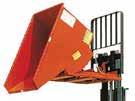

Jae Shin, principal and chief technology officer at KPB Architects in Anchorage, worked with Porath briefly. He recalls that the architect was proud to see his vision realized half a dozen times.
However, that contest was the first and last the district would use, and Porath’s design is unlikely to come off the shelf ever again. “If we were going to use that [design] again,” Knapp says, “we would need to update it to current code, current technology standards, that sort of stuff.”


The problem with prototypes is that every site is different. Dana Menendez, facilities planner for the Anchorage
School District, explains that designs must fit the site’s soils, elevation, and traffic access (to name a few factors), so a previously used plan is rarely ideal.
“You pull it off the shelf and put it on a site, the elements are there, the general design is there, but there would still be some design left to do,” she says.

Shin points to the replacement for Dr. Etheldra Davis Fairview Elementary, which he worked on as a project designer circa 1998. Although the Porath prototype existed, the new Fairview was built on a narrow slice of the lot while the old school was still standing. Thus, the replacement is two stories tall to fit a smaller footprint.
And forget about adapting the Anchorage prototype to the rest of Alaska. “We couldn’t set Bowman Elementary School in Bethel,” Menendez says.

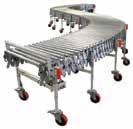




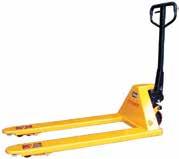

She tried, though, as part of the Alaska Department of Education and Early Development’s [DEED] exploration of statewide prototype schools. A 2015 report to the legislature, authored by Nvision Architecture and Ohio research firm Dejong-Richter, concluded that “a
statewide prototype school program would likely be unsuccessful given the insurmountable diversities influencing design and construction in the state in combination with the long-term projections of student population growth over the next 30 years.”
Much as the state might like to pay an architect once for an endlessly replicated school design, Menendez says, “We kind of came to the idea that there is no one right fit for all of Alaska.”




A follow-up to the 2015 report looked at setting statewide standards for model Alaska schools. Since 1993, DEED has conditioned bond reimbursement for local districts on certain costeffective construction criteria and energy efficiency standards. This rule could serve as a vehicle for defining school designs while allowing for local variation.
The first version of the design and construction standards was published last April, and architects were not impressed. Karen Zaccaro, a former teacher who transitioned
to architecture as a senior project manager at Stantec, says her colleagues didn’t give enough input. “I felt like the design community did not pay enough attention to what was going on, and I think they [DEED] are closer to adopting them than a lot of people realize. And I think it has impact to overall education environments,” she says. “I think in some ways it might be a little too constrictive.”
The standards set ranges for floor area and ceiling height based on student population, for example, and define “premium” elements that would not qualify for reimbursement.
Examples of premium elements include sites with slopes greater than 10 percent; elaborate, expensive, curved, or complex walls, ceilings, windows, and arches; wood floors (except where allowed for gymnasiums), natural stone floors, or terrazzo; decorative ceiling systems such as metal or wood slat ceilings; and operable wall systems or full-height sliding doors. Standards for school auditoriums define orchestra pits, professional theater lighting, and black-box theaters as out-of-bounds for state reimbursement.

Zaccaro worked on the design ratio subcommittee. “They have a preferred window-to-wall ratio, looking at it specifically from an energy standpoint,” she says. “That’s a pretty low ratio, whereas in my experience, the research that I look at for education environments, natural daylight has a significant impact on users across the board.”
The standards as now written are “locking down some of the creativity,” says Shin. “And I don’t mean whimsical creativity just for the architect’s ego. I’m talking about the creativity in terms of actual design that will actually matter for the way that children are educated.”
The era of school prototypes in Alaska has passed. “Typicals come into play when you’re in a growth of population and need to do new schools in a fairly quick amount of time. Then it makes it a lot easier,” says Morris. That time is not now.

With declining enrollment, the Anchorage School District is looking
 When Russian Jack Elementary (top) had to be replaced after a fire in the late ‘90s, a plan was immediately available. To fit the site, it’s a mirrored version of the plan used for schools like Kasuun Elementary (middle, bottom).
When Russian Jack Elementary (top) had to be replaced after a fire in the late ‘90s, a plan was immediately available. To fit the site, it’s a mirrored version of the plan used for schools like Kasuun Elementary (middle, bottom).
to close buildings, not make new ones. And when aging buildings are replaced, decades-old prototypes are out of step with new requirements.

“If you want to go through the pain and discipline of developing a prototype, you have to do it with the idea that you’ve got the funds to follow through with two or three or four examples, and that requires a certain amount of economic prosperity,” says Dougherty. “We’re just not economically in that space where we’re rapidly expanding, to where a prototype could save a lot of extra money and time.”
Reusing an existing blueprint might seem like a budget-minded strategy, but Zaccaro says the efficiency is illusory. “Design fees are similar for a prototype building compared to a sitespecific building; the difference in cost could be as little as 1 to 2 percent of the entire project,” she says. “Most would agree that is a good value for a customdesigned anything. So, even if you want to build the cheapest building, it’s still likely a better value to approach it for its intended purpose rather than fit it into a generic box.”
Or, as Zaccaro puts it more succinctly, “The most expensive square foot is the area you do not use.”

An off-the-shelf plan still requires a full redrafting to account for a code update, foundation design, utility connections, and other changes to be permitted, she adds.

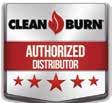
Before computer-aided design, redrafting was even more expensive, so prototypes made more sense. “Plans were hand drawn back then. Once a builder had a plan… you just keep reproducing that same house over and over and over again,” says Spinelli. “Hand drawing a plan—a custom plan or tweaking a plan every time—was a pretty labor-intensive thing. It wasn’t the cost of redesigning the plan; it was more the time.”
Architecture is a discipline that most people interface with once in their lives, if ever. “So some of the perceptions of those folks coming in is you just go to a drawer, pull out a plan that you like, and plop it on the site,” says Shin. “As designers, that’s not really how we like
to approach projects.”
The pull-and-plop method was tried in the ‘90s by national chains during Anchorage’s retail explosion. However, most of those buildings have since been customized.
Zaccaro observes, “A lot of the chain restaurants and stores that come up here, they come up with the idea, ‘Oh, it shouldn’t cost anything. You just have to re-stamp it.’ And I’ve just never known it to be true. There’s so much you end up having to redo.”
Different needs and values over time can mutate prototypes. Consider the humble Walmart. Shin worked on three of them: in South Anchorage, Eagle River, and both the original and expansion locations at Seward Meridian Parkway, just outside Wasilla.
“How hard can it be? They’re just a box,” he says. “Even if it’s just a box, you’ve seen how they updated the façade so it’s more attractive. Before it was a plain-Jane Walmart; now it’s got what we call ‘ticky tacky’ decoration on the top.”
And the ticky tacky keeps the boxes from all looking the same.
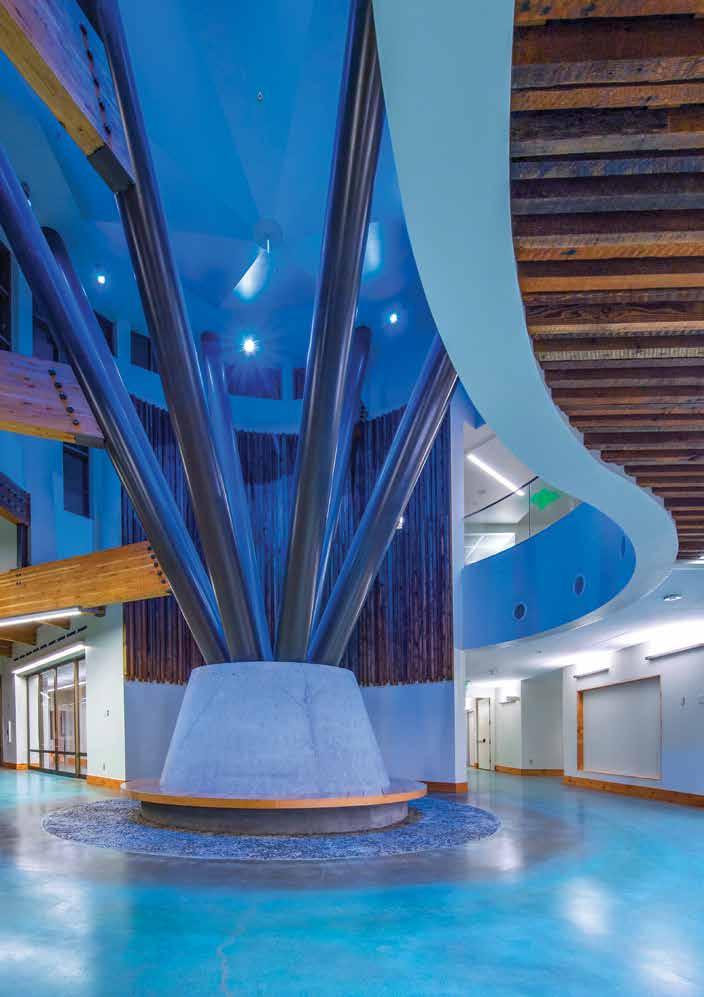
Sealaska Heritage Institute’s new Arts Campus in downtown Juneau resembles a giant Tlingit bentwood box. The main building for the Alaska Native Science and Engineering Program on the UAA campus is shaped like a canoe. The newly renovated office building at 601 West 5th Avenue in downtown Anchorage evokes the majesty of a calving glacier.
Local culture and geography have always helped architects and designers tie buildings into the community and landscape. The more specific the inspiration, the more unique the project, distinguishing it from any other place.
The location and tradition might be as tiny as a neighborhood school and its emblems.
“The color scheme for one of the schools we recently finished was the Eagle River Elementary project,” says Jennifer Midthun, associate architect at BDS Architects. “We asked for the staff’s input, which image speaks to them, and how they envision their school. In the end, and through several collaborations, we decided to go with [the] eagle in the birch tree theme.”
Eagle River Elementary was rebuilt after extensive damage from the 2018 earthquake. Midthun explains that the
school colors are blue and yellow, and using the image of eagles in birch trees and thinking about the various textures and colors was a starting point for the rest of the decisionmaking for the project.
“We use instruments of design and tactics to employ nature elements and
the color scheme,” Midthun says. “The materials and the textures we wanted to utilize were fantastic.”
BDS Architects has provided architectural, design, project management, and planning expertise throughout Alaska for forty years. Midthun says the method is very much a collaborative process. For Eagle River Elementary, designers spoke to administrators, teachers, students, and support staff like janitors.
Those sources are all fair game for integrating a project with its surroundings. Architects draw inspiration from the area’s natural beauty, tradition, and culture, and that vision can be seen in their final designs.
When the Kenaitze Indian Tribe approached Stantec to help design the Kahtnuht’ana Duhdeldiht education campus in Kenai, the firm thought outside of the box. Instead, designers thought of a basket. The curved exterior of the building, which held a grand opening in September, is covered with rainscreen panels that give the façade a woven appearance.
The tribe had seen success a decade earlier with its Dena’ina Wellness Center. That building’s exterior features
“It’s not necessarily our story to share, but we can help others tell their story in a meaningful way. When we are finished, and it all makes sense, looks nice, and works, that is a good outcome.”
Peter Briggs, President, Corvus Design
Landscape design considers not only the local flora suited to an outdoor space but also the traditional use of the space, such as quiet reflection at the Victims of Violent Crime Memorial at the corner of Third Avenue and L Street in Downtown Anchorage.
 Ken Graham | Corvus Design
Ken Graham | Corvus Design
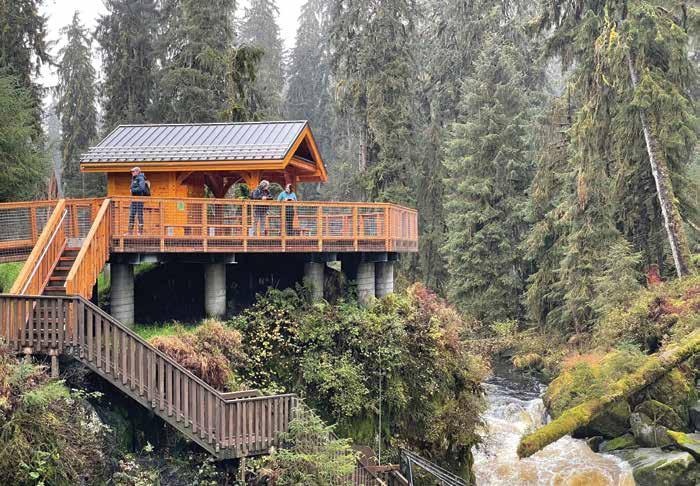

buttresses that resemble fish-drying racks, courtesy of Architects Alaska.
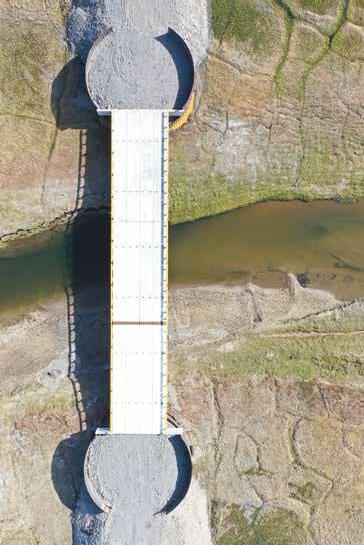
“We are proud to state that Architects Alaska has been on the leading edge of architectural practice in Alaska for over seventy years,” says Ally Tomi, the firm’s marketing director. “Architects Alaska designed the BIA [Bureau of Indian Affairs] Barrow Hospital in 1962. This mainly supported the Atlantic Richfield Complex, now called the Prudhoe Bay Operations Center.”
Architects Alaska engages the community and stakeholders to encourage collaboration on its designs, such as the recently completed Chief Andrew Isaac Health Center Expansion for Tanana Chiefs Conference in Fairbanks and the OR-17 Renewal for Providence Alaska Medical Center. Designers look for inspiration in nature, enhancing access to daylight and views, and providing warm, safe, and comforting places to live and work.
Landscape architecture is particularly sensitive to local conditions. Peter Briggs, founder and president of Corvus Design, is constantly aware of how the built environment affects people’s experience with the natural environment.
“For example, we don’t like people to park right next to the building because it doesn’t create a nice experience,” Briggs says. “But you don’t want people to park too far away from the building because on a cold day or if it’s slippery outside, you know that’s not optimal. A lot of the time, you’re trying to find a middle ground or a balance.”
Corvus was responsible for the landscape design at several of Cook Inlet Housing Authority’s four-plex buildings in Mountain View, where revitalization efforts have made a difference by adding beautiful homes and businesses.
“The services for a landscape architectural firm include everything outside the building,” Briggs says. “Our services start with helping clients choose the right site they might prefer to develop or help them develop a master plan. Often this includes where architects will put the building, parking, trails, and other design interests. Their services begin with helping clients figure out how their site and landscape will best meet their needs as an entity.”

Design is so connected to the local climate, nature, and culture that it is a big part of the conversations with clients and stakeholders. What’s important to Briggs, he says, is helping others tell their own stories. Thus, when Corvus Design works with any client, he asks how landscaping can help them tell their stories.
“Related to working with different indigenous populations,” Briggs says, “I think we take it for granted that there’s so much influence from our land and indigenous peoples and traditions. Several of our clients are indigenous entities. We are lucky (or spoiled) because we get a certain richness that architects and designers don’t get in the Lower 48.”
Briggs’ conversations with stakeholders include the person writing the check, the maintenance team, the students, and the faculty. The only way to get a successful design, he says, is to get a feeling for what everybody needs. The final design is a negotiation where the end product meets people’s needs and, hopefully, their wants.
Engaging with those involved is among the most meaningful aspects of Briggs’ work.
“We’ll talk to the project managers [and] the principal, but then we’ll hopefully be able to engage with the students, teachers, and maintenance people,” Briggs says. “Everybody has their expertise for that site, and you’ll often hear things that may conflict with each other. Our job is to work through it and find solutions for everyone.”
In Alaska, Briggs mentions, there is a deep connection to the land. When Corvus Design goes to someone else’s land, success comes from listening to and understanding the clients.
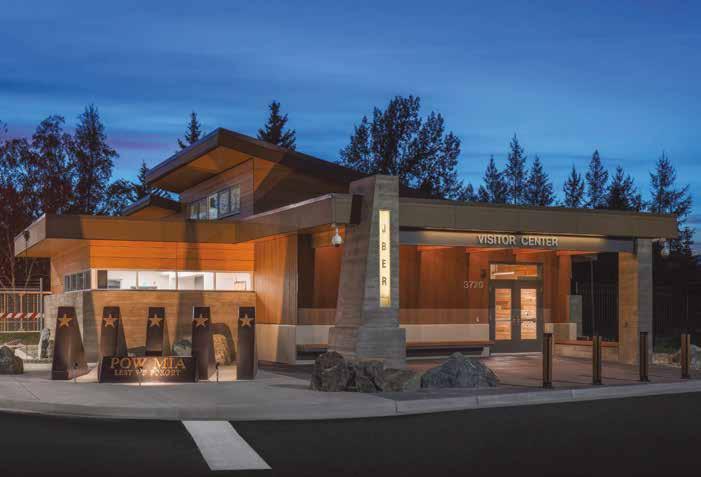
“It’s not necessarily our story to share,” Briggs says, “but we can help others tell their story in a meaningful way. When we are finished, and it all makes sense, looks nice, and works, that is a good outcome. Once you get a client who makes known they understand where we’re going or expands on, here’s something else we can do, that is a great outcome.”
The same approach works for Architects Alaska. “We also have a














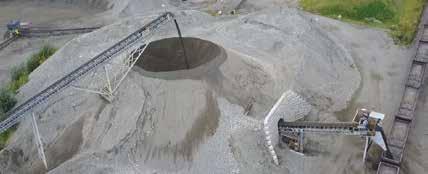


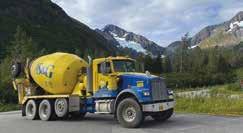
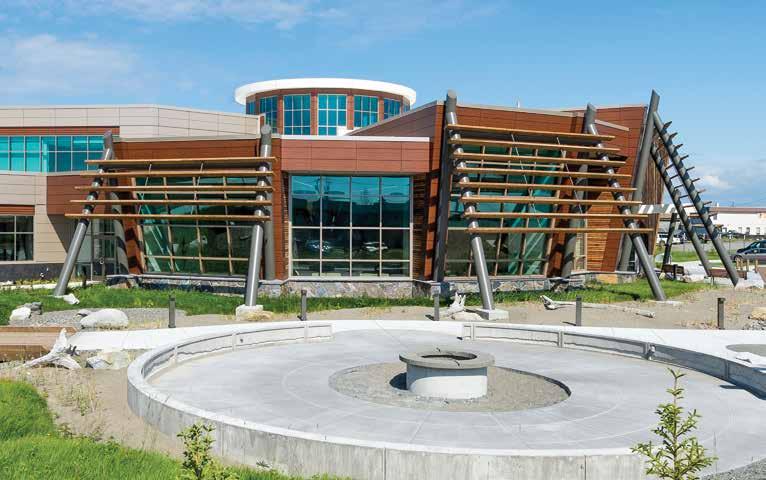
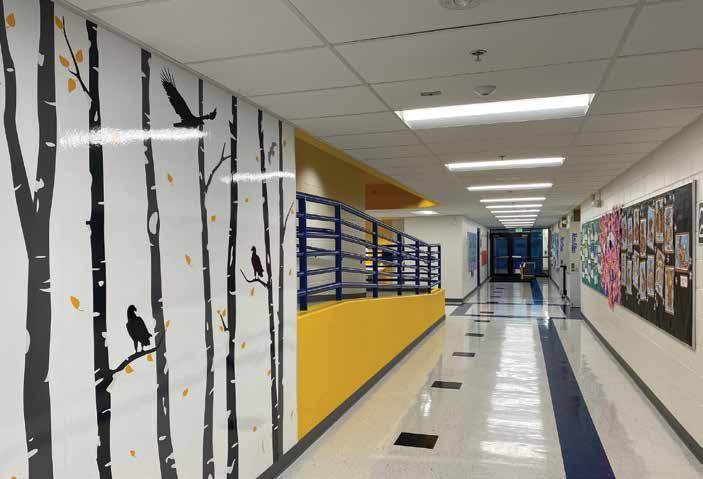








long history of working with tribal communities and corporations,” Tomi says. “We pride ourselves on understanding and embracing the nuances and identity of culture for each group we work with. We integrate local tribal culture into the facilities we design and build for a community. From medical centers, wellness buildings, eldercare facilities, and recreational buildings, we always strive to design for the tribe’s comfort and cultural appropriateness. We always listen to the community’s needs, vision, and aspirations for each project.”
Alaska’s architectural designs are distinctive, with challenges from extreme weather and multiple environmental regions. As a result, construction plans require appropriate architectural and technological responses that can meet client requirements and interests.

“Our experience in Alaska is unique compared to projects in the Lower 48,” Tomi says. The firm, founded in 1950 by Ed Crittenden “literally wrote
the book on cold climate design and construction,” she adds.
BDS Architects also takes guidance from Alaska’s climate and latitude, which set the state apart. “Number one, we have significant weather differences to consider when designing,” Midthun says. Another top consideration is seismic stability. “The earthquake mitigating technology within our structures ensures that our building designs address the next earthquake as best as possible,” she adds. Midthun notes that BDS Architects is still repairing buildings from the magnitude 7.1 quake in 2018.
Local conditions likewise affect what Corvus Design can accomplish. “We don’t have the same access to materials in the Lower 48,” Briggs says. “This is one way design is different in Alaska. We don’t have the same access to materials such as granite. We try to focus as much as we can on local materials and use them in a way that will last a long time. By using these materials, we avoid weathering damage. It’s a challenge to make sure the design makes the most of the materials we have access to.”
In-state logistics also shape design decisions. For some communities in Alaska, materials can ship by barge. Other communities are more limited to what can be delivered by plane.
“To reiterate, our architecture designs as a service industry are really about all our customers,” Midthun says. “Our job is to design a building that makes them happy and calm, and we intend to meet all their needs for functionality.”
Deep levels of detail are involved in the design and building of structures and landscaping in Alaska, including engineering, technical considerations, material use, and individual and community input that goes into a wellfunctioning building.
It may be surprising to learn that such a technically skilled-driven service as architecture is rooted in connecting with individuals and communities. Alaska is fortunate to have a canvas of natural beauty to find influences. From the trees, landscape, and diverse wild animals, few places have the scope, diversity, and rich cultures to draw from.
The theme for Engineers Week in 2023 is “Creating the Future.” It’s not an exaggeration: whether one envisions flying cars, 100 percent renewable energy, space or subsea exploration, or a reality that’s mostly virtual, it all takes engineering. As part of Engineers Week, the local Anchorage chapter names an Engineer of the Year. Criteria include recent significant engineering contributions, publications and patents, active participation in engineering and other professional organizations, community service and involvement, and education and certificates. The 2022 nominees are below, and the winner will be announced at the 2023 E-Week Banquet on Saturday, February 25, 2023.
in advanced tubular design and subsea completions. She has authored many Society of Petroleum Engineers (SPE) papers on completions and was awarded Alaska SPE Engineer of the Year in 2021 for her work on laminated sandstone stimulation and recognized for mentoring fellow engineers at ConocoPhillips. Her current role is leading the completion design for a new major project and discovery in Alaska.
Zwarich holds a bachelor’s degree in mechanical engineering with a minor in petroleum engineering from the University of Calgary and is a registered engineer in Alberta. She is also a member of the World Oil Editorial Advisory board.


Zwarich spends her free time on her bicycle and on skis. She was awarded Best All Around Female Cyclist in Alberta in 2004 and was a Canadian National team rower in 1995 and 1998.
Engineers Without Borders chapter at U of I, volunteering as its first president. During this time, from 2004 to 2010, he also served the Washington state Air National Guard as a staff sergeant in the aircraft maintenance squadron of the 141st Air Refueling Wing.
After graduation, Lewis was hired by Bechtel to work in Gladstone, Australia on the construction of a $6 billion greenfield liquid natural gas processing plant. Since then, he has worked for PND Engineers in Anchorage as a senior engineer, managed the Missoula, Montana office for STRATA, and now at EEI he works primarily with military clients.
Lewis continues to volunteer with the Society of American Military Engineers and Engineers Without Borders. He also mentors young engineers at EEI and strives to instill the belief of community involvement in those around him.
Outside of work he loves spending time with his wife and two children, accompanying them on adventures across Alaska.

Nola R. Zwarich is a principal completions engineer at ConocoPhillips Alaska. She has more than twenty years of experience at ConocoPhillips in drilling and completions engineering and has held various positions in Canada, China, Norway, Alaska, and at the Houston Global Science and Technology Center.
Zwarich specializes in acid stimulation of carbonates and well inflow design; she also has expertise
Aaron Lewis, department manager at Enterprise Engineering, Inc. (EEI), obtained his bachelor’s and master’s degrees in civil engineering from University of Idaho. During his tenure there he was elected president of the school’s American Society of Civil Engineers chapter and founded the
Nichole Rehm manages the design and construction of road and utility projects for the Municipality of
Anchorage (MOA) and marine and upland infrastructure for the Port of Alaska.
Born and raised in Anchorage, she graduated cum laude from UAA in 2002 with a bachelor’s degree in civil engineering. Her career began in 2001 as an intern at CH2M Hill (now Jacobs), where she gained experience evaluating design alternatives for a major highway, realigning a rail undercrossing, designing sound barriers, and performing environmental field work.
In 2005, Rehm joined Professional and Technical Services, a small private firm in Anchorage, where she still works today. For several years she provided design for numerous street, sewer, water, and drainage projects in the Anchorage area. She designed new infrastructure for residential development and rehabilitated many roads and utilities for public agencies.
Rehm served on the MOA Urban Design Commission since 2014 and became chair in 2018. She has also assisted the Institute of Transportation Engineering with the student scholarship program since 2017. Outside of her professional contributions, Rehm enjoys inspiring others to work hard physically and has been a fitness and cycling instructor for nine years.
been an officer of the Anchorage Branch of the American Society of Civil Engineers (ASCE) and a church council member. He currently serves as the vice president of the Alaska Section of ASCE. He is also active as a board fellow for Northaven Senior Living and volunteers at the Food Bank of Alaska. Simon has led the ASCE Anchorage Branch’s Community Engineering Corps activities for several years, working on projects such as designing a new playground for the Salvation Army’s McKinnell House.
Outside of work, Simon is a lifelong learner and is pursuing an MBA degree through the University of Washington. He also enjoys bow hunting, canoeing, and traveling with his family.
Institute of Electrical and Electronics Engineers.
Hulman-Watsjold enjoys reading and tabletop gaming with friends. She has performed with the Anchorage Concert Chorus for eleven seasons, including during their recent performance at Carnegie Hall.

Doug P. Simon serves a team of engineers and technicians as the Geotechnical Services Manager at HDL Engineering Consultants. His technical background includes bachelor’s and master’s degrees in geological engineering from the University of Wisconsin–Madison. He spent the first part of his career kicking dirt in the Midwest before adventure brought him and his family to Alaska more than a decade ago.
Simon enjoys giving back through volunteering and mentoring. He has

Andrea Hulman-Watsjold has seven years of experience as an RF (radio frequency) and electrical engineer and currently works at Pacific Dataport. Born and raised in Anchorage, she holds bachelor degrees in physics from Scripps College and in electrical engineering from UAA.
Hulman-Watsjold began her career at GCI in 2015, joining the RF engineering team in Network Services, where she maintained satellite infrastructure. One of her major projects was to migrate services statewide from one satellite to another while simultaneously upgrading aging infrastructure. She joined Pacific Dataport in 2021 and is currently finalizing preparations for the launch of the Aurora 4A satellite, designing hub infrastructure and the smaller terminals placed at customer locations.
Hulman-Watsjold helped revive the defunct student chapter of Society of Women Engineers (SWE) at UAA and served as president for two years. She holds the position of outreach chair for SWE Greatland and is active in the

As a senior water and wastewater treatment engineer at CRW Engineering Group, Rebecca Venot provides clients and teams achievable solutions to a wide range of water treatment challenges and delivers leadership on construction, commissioning, and optimization of water and wastewater processes. With more than fifteen years of expertise in water treatment process selection, design, and construction administration, Venot currently is leading the design for replacement water treatment plants for Joint Base Elmendorf-Richardson, Girdwood, Emmonak, and Tuluksak. Her design for Sitka’s Critical Secondary Water Supply, a 6 million gallon per day membrane filtration plant, the largest in the state, recently finished startup and commissioning.
Venot earned a bachelor’s degree in mechanical engineering from the University of Colorado and a master’s degree in civil and environmental engineering from Colorado State University. She started her career in Seattle, but after working on a project in Fairbanks she made Alaska her home.
Venot recently filled the role of president/chair of the Alaska Water and Wastewater Management Association. As vice chair of the American Water Works Association Coagulation and Filtration Technical and Education Committee, she is leading the rewrite of a chapter of the committee’s flagship manual on coagulation and filtration.
The Engineering Excellence Awards celebrate noteworthy projects designed by Alaskan engineers. Criteria are overall engineering excellence in the design, unique or innovative applications, future value to engineering, sustainability, complexity, and the satisfaction of the project owner. This year projects include a visitor control center, middle school, a water supply project, and a bridge, demonstrating the breadth of how engineering impacts Alaskans’ daily lives.
Michael Baker and STG Pacific executed the design-build project to demolish and replace the old bridge crossing the Chena River on Fort Wainwright. Design included permitting, bridge engineering, and hydrology, plus civil, geotechnical, and electrical engineering. Design analysis simplified the construction by identifying a substructure to accommodate future width upgrades, eliminating further in-channel work. The team fast-tracked the design and construction of the abutments and phased the work to allow a 600ton crane to set the 140-foot precast, prestressed concrete bridge girders in a single pick, completing the work one year ahead schedule.
The bridge configuration was selected to maximize the waterway and reduce abutment work. The center bridge span was designed to maximize the open channel of the Chena River and subsequently reduced the potential pier scour, providing a resilient bridge for future use. Design of the riprap revetment included a thick rock layer as a launching toe, which facilitated construction while avoiding scour or channel migration.
A significant construction challenge occurred for the 36-inch diameter by 75-foot minimum embedment pier
piles. Blow count and end bearing conditions were unable to meet design specifications due to soil conditions. The team overcame the challenges by adding a restrictor plate inside the piles to ensure a soil plug was created and by modifying the pile driving schedule to provide additional time for pore pressure dissipation. These construction solutions ultimately achieved the designed pile capacity and maintained the fast-track schedule to complete all in-water work before the May fish migration.
The Boniface Visitor Control Center (VCC) sits at the main gate of Joint Base Elmendorf-Richardson (JBER), which houses an amalgamation of Air Force and Army personnel. The original building, constructed in the ‘80s, was small, worn, and outdated. Since the VCC is the primary access point for visitors, new soldiers, contractors, and high-ranking officials, the US Air Force wanted an upgrade—something modern, warm, and stylish that reflected the prestige of JBER and the best of Alaska.
RESPEC teamed with BDS Architects to design a facility that featured an attractive blend of rustic Alaska with a modern touch. The VCC was opened to accommodate more people, equipment, and lighting. To give the building a cabin-like aesthetic, wood was incorporated into the design, with the steel frame left exposed. Typically hidden elements, such as HVAC, lighting, and conduit, were left visible to accentuate the open architecture.
As a showcase building, lighting is at the forefront of the VCC. More windows allowed the use of full daylight harvesting, capitalizing on Alaska’s natural light, conserving energy and lowering costs. Programmable RBG LED lights outside the building celebrate events and holidays, mimic
the northern lights, and illuminate the dark winter nights and days.
RESPEC designed during the thick of the pandemic and met the client’s schedule. The VCC reopened in early 2022. Now, members and visitors to the base are greeted by an eye-catching and welcoming building that boosts morale and represents a uniquely Alaskan identity.
Reid Middleton provided structural engineering services for the earthquake recovery project at Gruening Middle School in Eagle River. The epicenter of the Magnitude 7.1 earthquake on November 30, 2018 was 11 miles from the school, near Port MacKenzie. Due to the damage from the earthquake, Gruening was shut down for almost three years for earthquake repair, seismic upgrades, and programming upgrades. The Gruening Middle School Earthquake Recovery Project was an important effort by the Anchorage School District (ASD) to repair and upgrade the almost 40-year-old school.
ASD separated the project into three parts to accommodate multiple sources of funding: earthquake repair, seismic mitigation, and programming upgrades. Reid Middleton provided repair design of structural items damaged during the earthquake, design of structural upgrades per ASCE 41 [the American Society of Civil Engineers’ seismic rehabilitation standard], and design of new structural elements, such as mechanical penthouses and mezzanines. The project involved heavy coordination with the architect, mechanical and electrical engineers, and the owner.
Students returned to Gruening Middle School on August 17, 2021. Gruening is a two-year middle school, so none of the students that were present on the day of the earthquake
returned to the school. On October 14, 2021, the principal of Gruening Middle School, the ASD superintendent, and Alaska’s governor joined students, parents, and the design and construction team to celebrate the ribbon cutting at Gruening Middle School. Students proudly gave tours of their revitalized school, a school that has been upgraded to get A+ marks on the next earthquake pop-quiz.


Sitka relies on a pristine, unfiltered surface water source, Blue Lake, which has been impounded by a dam owned and operated by the City and Borough of Sitka since the ‘50s. The dam conveys water to Sitka through rock tunnels and penstocks to supply a hydropower facility and Sitka’s municipal supply. Water is treated with chlorine and ultraviolet disinfection, a very low-cost and effective treatment process. The municipal supply must be shut off every five years to clean and inspect the penstock, a process that takes at least five days, during which the city has no backup water supply. Furthermore, changes in the watershed have caused water quality changes that impact the ability to continue operating an unfiltered supply.
CRW Engineering Group was retained to evaluate water supply options, including development of a groundwater supply, filtration of an abandoned water source, or providing a new intake and additional treatment on the existing source.

Sitka elected to construct a new treatment plant capable of treating water from their existing source as well as a new river source. The facility includes a microfiltration membrane filtration plant with associated screening, chemical cleaning, backwash discharge, and finished water pumping. The new source has a rotating screen mounted in a retaining wall in an anadromous fish stream, supplying water to a new raw water pump station. The City can switch from their normal unfiltered supply to the new plant and source in eight hours. The secondary source saves approximately $300,000 in annual operating costs compared to running a filtration facility full time.
 Michael Baker | STG Pacific Design-Build Chena River Bridge
STG Pacific
RESPEC | BDS Architects Boniface Visitor Control Center Ryan Black | Blaxphoto
Reid Middleton Gruening Middle School Earthquake Recovery
Kevin G. Smith
Michael Baker | STG Pacific Design-Build Chena River Bridge
STG Pacific
RESPEC | BDS Architects Boniface Visitor Control Center Ryan Black | Blaxphoto
Reid Middleton Gruening Middle School Earthquake Recovery
Kevin G. Smith
Far from everywhere yet halfway to anywhere, Alaska occupies a central position for international shipping. Overseas customers crave the state’s exports of seafood, metals, and crude oil, yet that represents a sliver of Alaska’s trade potential.
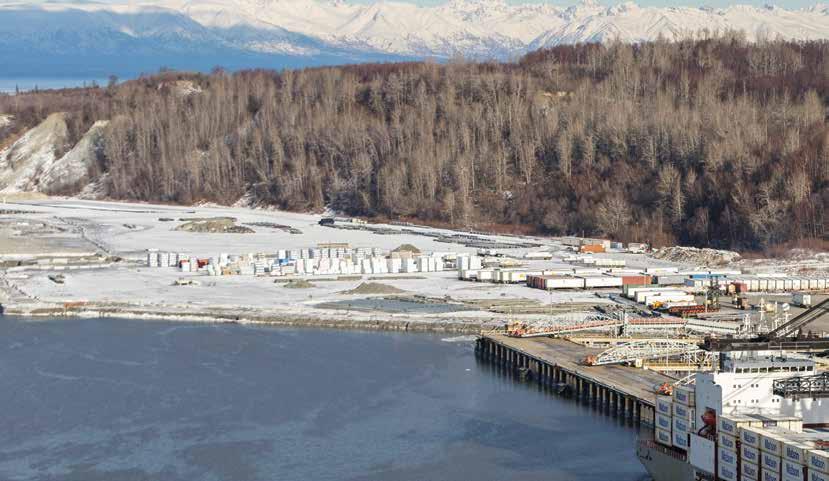
According to the Office of the United States Trade Representative, Alaska exported $4.8 billion of Made-InAmerica Goods in 2018, making it the 40th largest state for exports that year. Although outranked by landlocked Colorado and Oklahoma, Alaska’s access to the ocean gives it other avenues for shipping business. Among the international shipping companies are those with direct routes—where only one vessel carries goods—and those shipping through indirect routes that require offloading onto additional vessels, also referred to as transshipping.
Jake Maenpa, Vice President of Sales for Alaska Marine Lines (AML), says that Alaska is strategically located as a key transshipment hub for businesses targeting Asian, European, and North American markets. AML moves containers full of Alaska seafood on barges from fisheries in Bristol Bay, Prince William Sound, Dutch Harbor, Southeast Alaska, and other coastal locations. Much of this seafood goes first to Seattle, Anchorage, or Dutch Harbor by barge, where it is transferred to additional ships that carry it to its final destination. Freight is also moved to trucks or planes by a process known as transloading.
AML and its parent company Lynden have multimodal transportation infrastructure, which plays a vital role in connecting exporters with the rest of the world. This
is especially true in Alaska, where resources are primarily located in remote locations. Maenpa says companies often face the challenge of getting their products from point of origin to international gateway ports for distribution around the world.

“Relative to Alaska’s size, the road system is a tiny fraction of any other state,” says Maenpa. “Lynden’s business development has been driven by our customer’s needs to get beyond the road to reach their customers. By leveraging hubs and our multimodal capabilities, we can connect Alaska’s people and businesses seamlessly to each other and the world.”
AML’s barge services between Seattle and Alaska include weekly shipments to Southeast and Southcentral Alaska, with seasonal shipments to Western and Arctic Alaska. In total, the company services nearly 100 towns and villages in Alaska. In conjunction with the other Lynden companies, AML provides transportation and logistics solutions in Alaska, Hawaii, Canada, the Pacific Northwest, and around the world, so customers can optimize time and
money when shipping to, from, or within Alaska.
“For many Alaskan products, the journey to global markets begins on an Alaska Marine Lines barge,” says Maenpa. “This is especially true for exports from the seafood and mining industries in Alaska. As part of the Lynden family of companies, we have a diverse transportation network, including the ability to ship by air, land, or sea, so customers can move seafood or mining products from remote locations to gateway ports for distribution to the United States and around the world.”
Transshipment is necessary when a single direct service to an overseas market is unavailable, or the distance between the port of origin and the cargo’s destination is too far. However, there are other reasons companies choose indirect shipping routes. For instance, a shipment might be less than a container load, or what logistics experts call LCL, meaning smaller shipments require consolidation in a different container. Also, when larger vessels cannot berth at smaller ports, transshipment is the only
“Air freight can be used for time-sensitive situations, and when time is less of a factor, our barges can economically transport products and supplies. Our truck routes handle everything in between and bring products the final mile to the customer.”
Jake Maenpa
Vice President of Sales AlaskaAlaska Marine
Lines
option. In some cases, transshipping also costs less, depending on the freight. Technological advances make transshipment much more efficient than in the past.

Saving time and avoiding delays are the prominent reasons most companies choose direct shipping routes. Since cargo isn’t offloaded until its final destination, there is no need to wait at an intermediate port for another vessel or additional time taken for the offloading process. Direct shipping also sidesteps the risk of missing the load schedule that can occur at transshipment ports. However, direct shipment can sometimes cost more because direct shipping is in high demand and, in some cases, there are additional tariffs and import duties.
Like AML and Lynden, Matson also provides multimodal transportation services on both a domestic and global scale. Their ocean shipping services are supported by the vast transportation network from their subsidiary, Matson Logistics. Multimodal transportation services in North America allow Matson Logistics to provide domestic and international rail intermodal service, long haul and regional highway brokerage, supply chain services, and less-thantruckload (LTL) transportation services. They also offer comprehensive third-party logistics services that include warehousing, distribution, LCL consolidation, and international freight forwarding.
“Matson ships carry a wide variety of goods and materials in containers, refrigerated units, and on flat racks,” says Vic Angoco, Matson Senior Vice President of Alaska. “Our sole focus is providing dependable arrivals and departures that customers can count on. We specialize in carrying the wide range of commodities needed to support economies that rely on ocean transportation to continually replenish their inventories and supplies.”
Angoco adds that Alaska services are supported by experienced operations professionals in all specialties, including transporting everything from fragile and perishable consumer goods to industrial machinery, oversized vehicles, and building materials.
Matson ships to the Pacific region, including its home state of Hawaii as well as Guam/Micronesia, China, Japan, Australia, New Zealand, and many islands in the South Pacific. In Alaska, Matson provides twice-weekly container ship service from Tacoma to Anchorage and Kodiak and weekly service to Dutch Harbor. Matson’s Alaska–Asia Express service offers direct westbound service from Kodiak and Dutch Harbor to Ningbo and Shanghai, China or transfer at the Matson hub in Shanghai to thirty-seven other cities in Asia via Matson’s partner network. Matson also provides shipping from China to the United States with two expedited services, the China–Long Beach Express (CLX) and China–Long Beach Express Plus. Additionally, the CLX service includes a weekly stop at the Port of Naha at Okinawa, Japan. Angoco estimates that transit times from the US West Coast to Okinawa are up to four days faster than most companies. Additional routes to Japan include shipping cargo to mainland Japan via Matson’s network through Shanghai. Angoco says these two China shipping services have offered customers more than fifteen years of uninterrupted service.
“Our business model uses a closed system of owned and exclusive use assets to provide superior customerfocused service,” says Angoco. “Dedicated vessels, terminal facilities, and equipment allow us to dock, unload, reload, and sail our vessels on schedule with industry-leading speed and reliability.”
Angoco says an extensive fleet of owned chassis is readily available throughout their network and, coupled with tracking technology, enables
“Our business model uses a closed system of owned and exclusive use assets to provide superior customerfocused service… Dedicated vessels, terminal facilities, and equipment allow us to dock, unload, reload, and sail our vessels on schedule with industryleading speed and reliability.”
Vic Angoco
Senior Vice President Alaska Matson
Matson to complete the industry’s fastest truck turn times and cargo availability upon arrival. Matson uses a diversified fleet that features purpose-built container ships, as well as combination container and roll-on, roll-off vessels and specially designed container barges. Matson’s vessels are US built, owned, and operated, which provides significant advantages in the integrated trade lanes of the company’s operations.

Whether shipping directly or indirectly, a single vehicle rarely suffices for the entire trip. Maenpa says mining companies utilize Lynden’s capabilities to transport concentrate from remote inland locations in Canada and Alaska to tidewater for global export. He says moving these products often requires an innovative mix of marine, air, and land options to provide the most efficient and effective transportation solution.
“It is critical for carriers to be able to adapt and react quickly,” says Maenpa. “Lynden champions a multimodal approach to ensure customers have maximum flexibility in their supply chain planning. Air freight can be used for time-sensitive situations, and when time is less of a factor, our barges can economically transport products and supplies. Our truck routes handle everything in between and bring products the final mile to the customer.”
And while international exports are a growing market for both Matson and AML, they still place a high value on domestic markets to and from Alaska.
“Marine transportation is the backbone of the modern global supply chain and is vital to the Pacific region we serve,” says Angoco. “In Alaska, the Port of Alaska supports an estimated $14 billion in economic activity across the state.”
Maenpa adds that Lynden has played a major role in improving logistics in Alaska by pioneering and providing dependable transportation to the state and expanding its service to remote and previously inaccessible points.


“From Ketchikan to Kaktovik, we have enhanced and improved logistics in Alaska,” says Maenpa, “and we consider this a major enticement for business development in the state.”

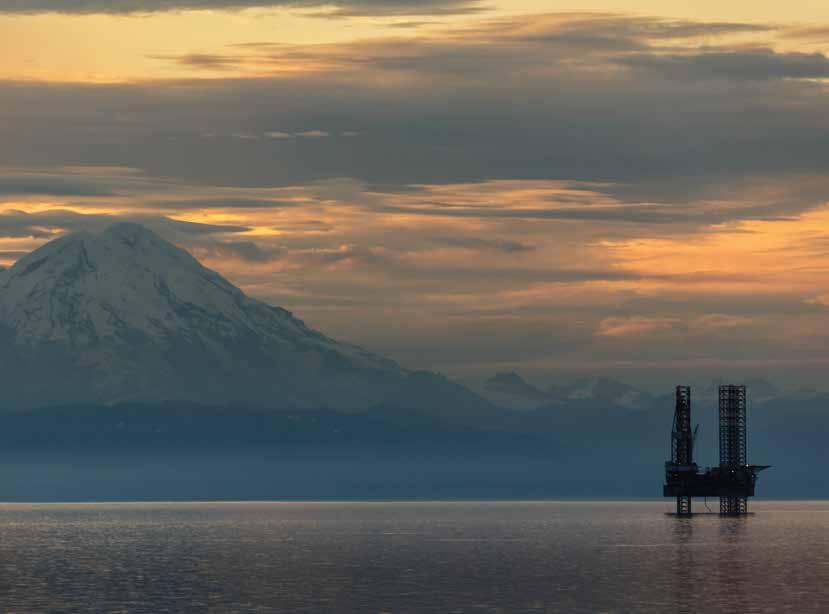 By Alexandra Kay
By Alexandra Kay
Natural gas consumption from Cook Inlet has reached a tipping point, outpacing production in recent years. The shortage is not a crisis today thanks to surplus gas stockpiled in the years before the consumption and production curves intersected.
“Natural gas from the Cook Inlet basin is essential to meeting the energy needs of Alaska’s Railbelt region,” according to a 2018 report from the Alaska Department of Natural Resources (DNR). “It generates 70 percent of the Railbelt’s electricity, heats over 140,000 homes and businesses, and supplies fuel needed by industrial users.”
“In 2015, natural gas was the fuel source for 83 percent of all electricity generated within the Mat-Su Valley, Anchorage, and Kenai Peninsula and approximately 70 percent of total electricity generated in the entire Railbelt region,” the report noted. The inlet fuels every gas-fired power plant in Southcentral, and some of that energy is shared as far away as Golden Valley Electric Association in the Fairbanks area.

The majority of that natural gas is produced by one company, Hilcorp, which started operations in Cook Inlet before taking over BP’s North Slope assets. Last April, Hilcorp notified a few Alaska utilities that the company doesn’t have enough natural gas resources for contracts up for renewal in the next two to eleven years. Homer Electric Association (HEA), with a contract expiring in early 2024, is the earliest. In its warning, Hilcorp noted that, while it has enough natural gas to fulfill current contracts, renewal of contracts in the future would depend on the company’s ongoing drilling program.
“Hilcorp’s message was a bit of a wakeup call for all of the natural gas users in the Cook Inlet,” says Lindsay Hobson, director of corporate resources and communications for ENSTAR Natural Gas Company. “It provided an opportunity for ENSTAR to really dive in and assess our customers’ needs into the future with sufficient time to look for additional fuel sources.”
Dependence on Cook Inlet gas puts utilities in an unusual position. “Unlike utilities in the Lower 48 that can turn to a network of supply basins and other companies for additional volumes if the need arises, ENSTAR relies on a single system that draws from a single source to meet all of its customers’ needs,” Hobson says.



In response to Hilcorp’s notice, six Alaska utilities announced the formation of a working group to assess energy security and future gas supply needs in the Cook Inlet. The group includes Chugach Electric Association, Interior Gas Utility, Matanuska Electric Association, Homer Electric Association, Golden Valley Electric Association, and ENSTAR. The Alaska


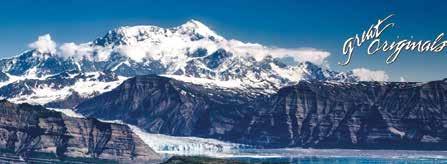
Authority and DNR also joined the working group.
“Today, we add another tool to our toolbelt by joining forces to address potential future challenges regarding natural gas supply in Cook Inlet,” said the group in a May 2022 press release announcing its formation. “We understand the uncertainty inherent in relying on a single source to meet a significant portion of our demand… This group will work collaboratively as utilities and in partnership with the state of Alaska to ensure our ability to reliably and efficiently meet the energy needs of Alaskans in the Railbelt region over the long-term.”
Cook Inlet is Alaska’s oldest oil and gas producing basin, dating back to the ‘50s. Production peaked in the ‘70s and has declined ever since, but Hilcorp, the operator of all federal units in the inlet, has been working to reverse that trend. “Their efforts to increase the oil and gas production from these mature fields have proven successful,” the US Bureau of Land Management notes on its website.
A Hilcorp spokesperson says that the company plans to continue to invest in the area.
“A secure gas supply is essential for Southcentral Alaska, and Hilcorp is proud to provide a significant part of that. Over the past two years, Hilcorp has spent hundreds of millions of dollars focused on producing additional natural gas, and in 2022, we delivered more than 50 billion cubic feet,” says Luke Miller, Hilcorp’s government and public affairs leader and manager for Alaska. “We plan to continue making substantial investment in the Cook Inlet over the next few years, focused on producing additional natural gas for Alaskan homes and businesses. We are proud of the work we have done to revitalize the Cook Inlet basin and remain committed to continuing our investment into the future to satisfy the commitments we have made to local end users.”
Chugach Electric, which gets about 50 percent of its annual natural gas requirements from Hilcorp, is seeking other sources of natural gas before its contract ends March 31, 2028. At the same time, the co-op is pursuing renewable energy to supplement its gas-fired generation. According to
Chugach Electric CEO Arthur Miller, the company is evaluating alternative gas sources other than the Cook Inlet basin as well as renewable resources like hydroelectric, wind, and solar.
“Chugach is taking a proactive and multidisciplinary approach in response to Hilcorp’s announcement earlier this year,” says Miller. “While it is recognized that natural gas will continue to be essential at least over the foreseeable future, renewable and other clean generation resources will increasingly play a significant and essential role in meeting long-term generation requirements. A key priority for Chugach is decarbonization, and we have a goal to increase renewable generation by 100,000 megawatt hours by March 31, 2025.”
Miller notes that the other electric utilities are also discussing opportunities for renewable generation projects.
Hilcorp provides 86 percent of Homer Electric Association’s natural gas supply, and that utility’s contract has only about one year left before expiring. In a May 2022 “Monthly Manager’s Report,” HEA General Manager Brad Janorschke mentioned Hilcorp’s meeting with stakeholders and noted that “any future [natural gas] contracts would be dependent on current drilling programs to secure additional reserves” and said the company is “following this closely.” ENSTAR, the region’s largest utility, has a contract with Hilcorp through April 1, 2033. About 90 percent of its anticipated natural gas needs are met for the next decade, and the company is looking further ahead.
“We are proactively and aggressively researching and developing future natural gas sources, including storage, so that our customers continue to receive the same level of safe and reliable service they receive every day of the year,” says Hobson, who notes that there is a potential that ENSTAR will import natural gas “if a viable, reliable in-state option is not available in the near future.”
Although Hilcorp sounded the alarm about possible supply shortfalls in its upcoming contracts, utilities have been aware of the problem for years. Their customers have been spared from worry, however, thanks to stored gas.
“We plan to continue making substantial investment in the Cook Inlet over the next few years, focused on producing additional natural gas for Alaskan homes and businesses.
We are proud of the work we have done to revitalize the Cook Inlet basin and remain committed to continuing our investment into the future to satisfy the commitments we have made to local end users.”
Luke Miller
Government and Public Affairs Leader and Manager Hilcorp Alaska
MARCH 29-31, 2023

Join 1,000+ leading government officials, politicians, business executives and investors, indigenous leaders, scientists, military officials, and guests from 15+ countries at the 2023 Arctic Encounter. Proudly hosted in Anchorage, this world-class event is North America’s largest Arctic policy and business convening.

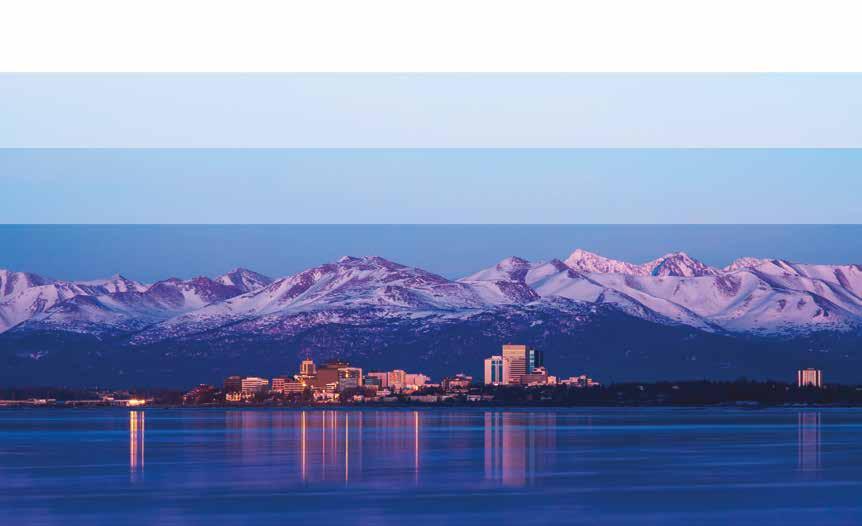
In April 2012, utilities began reinjecting gas into five horizontal wells that make up Cook Inlet Natural Gas Storage Alaska (CINGSA). The facility in Kenai—owned by ENSTAR’s parent company, AltaGas of Calgary, Alberta (pending a sale of a 65-percent indirect interest to another Calgary company, TriSummit Utilities)—has a capacity of 11 billion cubic feet. After six months of adding gas, CINGSA began withdrawing from the reservoir to keep up with winter demand.
CINGSA hit a milestone last September, nearly filling its reservoir with 10.7 billion cubic feet, thanks to extra gas leftover from the previous winter. John Sims, president of both CINGSA and ENSTAR, says further expansion of the existing facility or adding a new one on the west side of the inlet may be in order.
Storage can’t conjure new gas, though. DNR has estimated that Cook Inlet will be depleted of extractable gas by the end of this decade. Looking for new sources, last year Chugach Electric and ENSTAR each hired consultants to study importing liquified natural gas (LNG), most likely from British Columbia. In filings with the Regulatory Commission of Alaska, Chugach Electric named Black and Veatch as its consulting firm, and ENSTAR named Berkeley Research Group. The expense of the consultants may be added to customer rates, with regulatory approval.
Sims told the Northern Journal newsletter in November that imports might be a bridge until a pipeline brings North Slope natural gas to the region. The gasline is aimed at the idled LNG export terminal in Nikiski. However, importing LNG would involve more modifications than simply attaching a hose to the spigot and reversing the valve. Thus, the utilities must explore whether the import option is worth the capital investment.
The analysis must confront the same economic factors that constrain the region’s gas supply in the first place. That is, despite hosting half of Alaska’s population, energy demand in the Cook Inlet market is marginal for companies considering whether to explore for resources. State subsidies altered the bottom-line calculation a decade ago, spurring some new
interest, but those subsidies have since been phased out, sending explorers to more profitable prospects.
The forecast of Cook Inlet gas meeting demand until 2030 depends on producers extracting all of that resource. However, new activity is not attracting much interest. During the May 2022 annual Cook Inlet areawide lease sale, there were only two offers, both from Furie Operating Alaska. And after the Biden administration canceled a Cook Inlet lease sale in summer of 2022, it was rescheduled by order of Congress for late December. A state lease sale was scheduled for the same day, with DNR Deputy Commissioner John Crowther saying, “The basin still holds significant potential and an important step to unlocking it is to consistently offer open acreage to explorers.”
The December sale ended with Hilcorp submitting the sole winning bid on one federal tract out of 193 blocks offered. Hilcorp was also the high bidder on six tracts offered farther north, in state waters, but no other companies showed interest.
“The Cook Inlet basin has served as the Railbelt region’s exclusive source of natural gas for nearly sixty years,” noted the 2018 DNR study, Cook Inlet Natural Gas Availability. “As oil and gas fields in Cook Inlet continue to age, there is an ongoing need to assess the basin’s capacity to meet natural gas demand over the coming years.” The study was undertaken to evaluate the basin’s capacity to meet future demand and to find out what quantities of natural gas are recoverable through additional investment. The study concluded that “there are significant gas volumes potentially available through additional investment and development… but over time, the natural gas price required to induce additional supply increases.” Inlet gas prices, already more than 50 percent higher than in the Lower 48, would need to nearly double to $12 per thousand cubic feet for production beyond 2030 to break even.
Even as the state tries to encourage more exploration in the Cook Inlet basin, utilities are looking to other sources beyond, to diversify both supply and competition.
“We are proactively and aggressively researching and developing future natural gas sources, including storage, so that our customers continue to receive the same level of safe and reliable service they receive every day of the year.”
Lindsay Hobson
Director of Corporate Resources and Communications
ENSTAR Natural Gas Company

In Alaska, commercial property exposures range from natural events such as wind, wildland fires, earthquakes, landslides, and floods to human-caused risks like burglary, vandalism, and arson. While severe wind events and earthquakes are almost impossible to predict with any certainty, perils such as avalanches, landslides, and floods tend to fall back to the old real estate adage of “location, location, location.” If the property is not susceptible to those risks thanks to distance, then the likelihood of a loss is nil. But for those day-to-day exposures that property owners are likely to encounter, the best defense is a solid offense. That means taking a proactive approach to property risk management to reduce the probability of losses. While it is understood that liability follows the property ownership, the focus here is on physical exposures and controls to limit risk incurred to structures and people.
The first step to protecting property is understanding the totality of vulnerabilities for the building. This is a risk assessment that can be easily conducted with the help of the commercial insurance carrier or loss control professional. The key to a complete, quality analysis is understanding not just the location of the property but also the operations at that individual location. Adequate controls for a multi-unit habitational occupancy may be significantly different than for a low-rise office building. Some operations have special hazards, which can include flammable and combustible liquids, spray-painting operations, commercial cooking, welding, and cutting. In buildings where these types of tasks are performed, a
thorough review of the National Fire Protection Association regulations is necessary and should be adhered to closely.
There are a significant number of buildings in Alaska where mixed or multiple occupancies exist, such as restaurants or maintenance shops in the same location as apartments. These combinations of exposures pose a unique danger due to the comingling of high-risk special hazards and residential occupants. For many properties in this category, fire is a significant possibility, and the best mitigation solution to many of these potential perils includes active fire prevention and protection systems.
Private fire protection systems are fire safeguards at the property, such as fire extinguishers, alarms (both fire and smoke), and automatic sprinkler systems. Automatic sprinklers are the most reliable and effective fire protection devices available today, provided they operate correctly. The clearance for sprinkler heads is a minimum of 18 inches, so stacking items to the ceiling should be avoided. All of these systems have annual inspection requirements and should be part of a formal property inspection process. Insurance companies tend to give credits on insurance premiums for sprinklered buildings if the systems are inspected and maintained properly.
Formal property inspections are a great way to ensure that the building is taken care of consistently. A checklist for the structure that can quickly and thoroughly assess exposures and controls is highly recommended. The inspection sheet should address the interior, exterior, and adjacent property conditions of the building. It should
also contain a process for reporting and mitigation of noted hazards and be retained for a length of time. It is important that the person carrying out the inspection understands what to look for and why. For larger buildings, professional security services can provide monitoring of surveillance equipment, guarding entry points, and verifying visitors. Professional property managers are another good solution to ensure that the property is adequately operated. Both types of professionals can perform building walk-throughs and are often formally trained in the inspection process.
Yet another good resource is the Insurance Institute for Business and Home Safety (IBHS). The IBHS is an independent, nonprofit scientific research and communications organization supported by property insurers and reinsurers. At ibhs.org you will find information about protecting buildings and property as well as links to information to help increase resilience for structures. Regardless of the chosen option, formalized documentation should be provided to the building owner for review and retention, including any deficiencies or risk mitigation work that was completed. A thorough inspection should start from the outside in, and from the top down.
1. Assess the structure’s cladding, roof, walkway, windows, doors, and any adjacent hazards such as trees or other threats.
2. Keep egress doors clear of obstructions such as snow or trash.
3. In the parking lot and around the building perimeter, sufficient lighting, security systems, roving vehicle patrols, adequate fencing, and solid

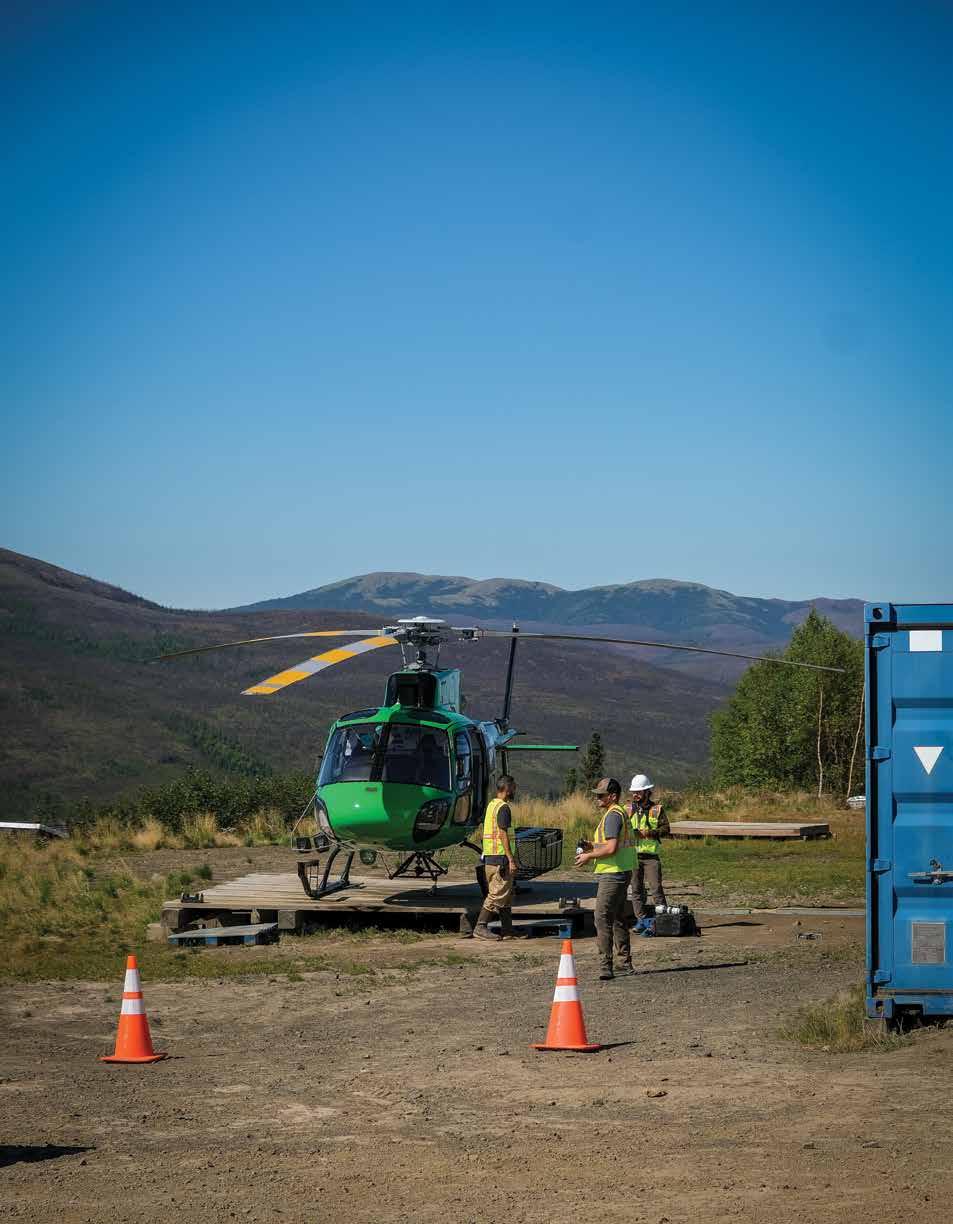
The ConocoPhillips Building’s days as Alaska’s tallest inhabited structure are numbered. A new control tower for Ted Stevens Anchorage International Airport will rise 4 feet taller, to more than 300 feet, twice as tall as the existing airport tower. The Federal Aviation Administration selected Stantec to provide architecture and engineering design services. The current tower was built in 1977 to accommodate only four air traffic controllers. An increase in aircraft movements since then created a need for more controllers, leading to overcrowding. stantec.com
The former Sears warehouse near Midtown Anchorage has a new tenant. Amazon is setting up a sorting facility in the 88,000-squarefoot building. Renovation is scheduled this spring. The warehouse has been vacant since Sears downsized in 2018, and last year it was purchased by Time Equities, Inc. amazon.com
A subsidiary of Anchorage-based Advanced Supply Chain International (ASCI) won a $12.4 million contract to provide logistics service support for federal agencies, both civilian and military, in Alaska. ASCI has been providing supply chain and asset management consulting and services to commercial and government customers since 1999, but this is the company’s first federal contract. The one-year contract
comes with four one-year extension options. ascillc.com
For the last few years, Southcentral Alaska has burned more natural gas than is produced in Cook Inlet, drawing on stored resources. That fact has Enstar and Chugach Electric Association each hiring consultants to evaluate options for importing liquified natural gas. Enstar notified the Regulatory Commission of Alaska that the cost of the consultant might be tacked onto customer charges. enstarnaturalgas.com | chugachelectric.com
A startup company is proposing the largest wind farm in Alaska yet. Alaska Renewables, formed two years ago by former UAF oceanographer Andrew McDonnell and engineer Matt Perkins of Nevada, has two subsidiaries pursuing projects in Southcentral and the Interior. Little Mount Susitna Wind would install up to eighty turbines near Tyonek, generating as much as 250 MW, ten times the size of the Eva Creek wind farm near Healy, currently the largest in the state. Shovel Creek Wind filed for permission from the state for a project near Murphy Dome, 20 miles northwest of Fairbanks, for at least sixty turbines generating 200 MW. alaskarenewables.com
Sitka-based Northline Seafoods secured funding to build a mobile commercial salmon processing platform for Bristol Bay. The vessel, named Hannah, will deep freeze
whole fish from catcher vessels. At the end of the season, it will haul the load to Bellingham, Washington, for storage, reprocessing, and distribution. Northline Seafoods is refitting a disused barge hull with a $40 million federal loan and $22 million from Greater Commercial Lending. Hannah replaces Northline Seafoods’ previous processing barge that grounded in a windstorm in September 2020.
northlineseafoods.com
The operator of one Great Harvest Bread Co. in Fairbanks opens a second location this month. Tricia Cray has owned her current Great Harvest Bakery and Café on College Road since 2012, and the franchise is doing so well that she is expanding to a former Pizza Hut about two miles away. The new shop includes a drive-through window. The Montana-based chain has franchises nationwide but only one other location in Alaska, at the Metro Mall in Midtown Anchorage. greatharvestfairbanksak.com
Shut down since the start of the COVID-19 pandemic, McGinley’s Pub in downtown Anchorage reopens this month under a new name: Blarney Stone. One of the co-owners, Jack Lewis, says the atmosphere is even more Irish, and the space on G Street is being renovated with a new entrance. Lewis is the only coowner remaining from the pub’s launch in 2007; others, including former mayor Dan Sullivan, left the partnership during the pandemic.
















Alaska Public Media (AKPM) chose a Midwestern broadcasting executive for the new position of Chief Operating Officer and Vice President of Administration. In this role, Dorothy McGrath works with CEO and President Ed Ulman and the organization’s executive management on strategic initiatives, cross-departmental projects, and capacity-building objectives. McGrath also provides administrative coordination for all divisions of AKPM while providing direct supervisory responsibility for human resources and business services. McGrath is a 33-year veteran of public broadcasting, most recently serving on the senior management team for Milwaukee PBS. She began her career in the production department at Nebraska Public Media and worked at KMOSTV in the Kansas City, Missouri area. In Milwaukee, she led the local production and logistics support efforts during the PBS NewsHour’s production of the 2020 Democratic National Convention.

KNBA, the Anchorage-based radio station owned by Koahnic Broadcast Corporation, added two veteran journalists to its broadcast newsroom.
Rhonda McBride comes aboard as News Director, bringing more than thirty years of experience covering rural issues and Alaska Native culture, language, and history. She has also reported on state and local government, fisheries,



Alaska Native corporations, and the oil industry. She moderated the first US Senate debate north of the Arctic Circle during the 2016 election. McBride’s work has been recognized both nationally and locally, through the Alaska Press Club, the Northwest Pacific Emmys, the Society of Professional Journalists, and more. In May 2022, she was inducted into the Alaska Broadcasters Association Hall of Fame.

Jill Fratis, the new News Producer for KNBA, previously was station manager of KUHB in St. Paul. She has experience in both early childhood and technical education and as a tribal government service coordinator and wellness advocate for the Aleut Community of St. Paul.
McKinley Management added three new positions to its executive team.
Jill McLeod comes aboard as General Counsel. McLeod was previously a partner at the international law firm of Dorsey & Whitney, where she managed the firm’s Anchorage office and was a member of the firm’s mergers and acquisitions practice group. Prior to joining Dorsey, McLeod served as in-house counsel for ConocoPhillips in Anchorage, providing expert legal advice to the company’s Alaska North Slope asset group.
Ian Walser is McKinley Management’s new Chief Financial Officer. He was previously vice president, controller and compliance

for Alaska Growth Capital, which changed hands in September from Arctic Slope Regional Corporation (ASRC) to become McKinley’s fourth business unit. Walser had been ASRC’s state tax manager. As a CPA, Walser also has experience in corporate and tax accounting, and he also spent time in public accounting at PricewaterhouseCoopers.

The new Chief of Staff, Shareen Crosby, works closely with McKinley’s executive team to develop Alaska business opportunities and provide project management, research, and writing support. “Shareen’s role is designed to help optimize our executive team and support our business development process,” says CEO Rob Gillam. Crosby has been published as a restaurant critic and worked for the last seven years as chief of staff to state Senator Natasha von Imhof.

Coffman Engineers brought Josh Crowe into its structural department as a Senior Structural Engineer. He joins Coffman as the firm’s project demands increase. Crowe is already working on a significant seismic evaluation and retrofit of a multi-story building. Crowe has twenty-one years of experience in construction administration and marine and structural engineering. He is a licensed civil and structural engineer in the state of Alaska and is knowledgeable in both steel and concrete design and construction methods. He earned his bachelor’s degree in civil engineering and
 McGrath
Fratis Crosby
McBride
McLeod
Walser
Crowe
McGrath
Fratis Crosby
McBride
McLeod
Walser
Crowe
master’s in structural engineering from Marquette University. Crowe has worked in project engineering, project management, building information modeling, and strategy development. His construction administration projects have included rural runways and urban road construction. His background also includes materials testing, grade inspection, and field engineering. After earning his master’s degree, his focus shifted to rehabilitation and structural design.
PND Engineers promoted four senior engineers to Principals at its Anchorage and Juneau offices.





Alexandra West Jefferies joined PND in 2011 as a civil engineer after working for the firm as an intern. Jefferies earned bachelor’s and master’s degrees from UAA, where she became the first UAA student to earn a US patent for her hydrokinetic fish grinding system. Raised on the Kenai Peninsula, Jefferies has excelled at PND as one of the company’s preeminent hydraulic and hydrologic specialists.
Corey Roche joined PND in 2012 as a civil and structural engineer. Roche earned his bachelor’s degree in civil engineering from UAA. Prior to his engineering career, Roche worked as a certified welder and heavy equipment operator for six years in rural Alaska. Roche provides structural design, planning, inspection, and construction administration services for PND on bridges, docks, marinas, roads, and other site-civil-related projects.
Tyler Bradshaw joined PND in 2009 as a civil engineer. Bradshaw earned his engineering degree from Colorado State



University after serving in the US Air Force in Iraq. Bradshaw has fifteen years of professional experience in project management, water/ wastewater engineering, and civil design, with a focus on coastal utility systems and harbors. Bradshaw has designed, inspected, and administered construction for water, sewer, and fire suppression systems on more than twenty harbor and pier projects throughout Alaska.
Sean Sjostedt joined PND in 2011 as a civil engineer after earning a bachelor’s degree from the University of Idaho with an emphasis in geotechnical engineering. Sjostedt specializes in geotechnical explorations and design, planning, and civil design in support of buildings, roadways, and marine/waterfront infrastructure, particularly in Southeast Alaska. Prior to his engineering career, Sjostedt worked in the commercial fishing and heavy civil construction industries in Cordova.
Heading into his second term, Governor Mike Dunleavy appointed new cabinet heads for the Alaska Departments of Natural Resources and Health.
The governor appointed oil industry attorney John Boyle to lead the Department of Natural Resources. Boyle studied management and finance at Brigham Young University and then earned his JD at Brigham Young’s J. Reuben Clark Law School. He moved to Alaska in 2010 to serve a judicial clerkship in Fairbanks. He then moved to Utqiaġvik to work as an assistant borough attorney and later chief advisor to the Mayor and Director of the North Slope Borough's Government
and External Affairs department. In
Boyle took a job with BP as director of government affairs before joining Oil Search (now Santos) as government affairs manager.
The new Commissioner of the Department of Health has held the position in an acting capacity since November.
Heidi Hedberg was the Director of Public Health when she took over for Adam Crum, who was named to lead the Department of Revenue. Hedberg moved to Alaska from Seattle in 1995 and earned a bachelor’s degree from Alaska Pacific University. She worked with various nonprofit organizations before being hired by the state in 2009. She also chairs the Governor’s Advisory Council on Opioid Remediation and serves on the Governor’s Council on Homelessness and State Emergency Response Commission.
A former chief of staff to the governor is the new Executive Director of the Alaska Industrial Development and Export Authority (AIDEA). The board of directors of the state-backed corporation appointed Randy Ruaro to the position, replacing Alan Weitzner, who resigned in November. Ruaro most recently served as Governor Mike Dunleavy’s chief of staff, managing the governor’s office and providing administrative oversight to state agencies. He has previous executive leadership experience with former governors Frank Murkowski, Sarah Palin, and Sean Parnell and in the legislative branch. Ruaro holds a degree from Willamette University College of Law. As an attorney, he worked on access issues, permitting, and state land rights for Alaska and for AIDEA projects.

more information, please visit us at www.nac .aero.
Northern Air Cargo is committed to getting your cargo where it needs to be, on time, so you can worry about what really matters.
Tikahtnu means “big water river” or “ocean river” in Dena’ina Athabascan, referring to the inlet from the northern Pacific Ocean that Captain James Cook entered in 1778. The British Admiralty was hoping Cook would discover the Northwest Passage, but his only achievement in Alaska was completing maps of the coastline begun by Russian and Spanish explorers.
Cook was unable to appreciate the treasure buried beneath the big water river. Geologic forces created hydrocarbon reservoirs below the silty seabed. Unocal tapped that resource in 1959, discovering a major natural gas field not far from Swanson River, where Richfield Oil had drilled a successful well two years earlier. It wasn’t the first such discovery in Alaska; the tiny village of Katalla, across the mouth of the Copper River from Cordova, became a boom town after a gusher in 1902, but production ended thirty years later when the local refinery burned down.
Katalla was always considered too remote to become Alaska’s industrial heart, but the oil and gas from the Tikahtnu region had the advantage of proximity to the newborn state’s population center. Anchorage, the Matanuska-Susitna Borough, and Kenai Peninsula owe their prosperity to the energy pumped out of the big water river. Natural gas supplies electricity and heat; without it, the region might depend on coal mined from Healy or the smoky bluffs of Kachemak Bay.
This edition of Alaska Trends quantifies the riches of natural gas from Cook’s inlet. The resource has lately lagged behind the region’s demand, as described in this month’s article “Running on Fumes” by Alexandra Kay, but it’s not exhausted yet, and new explorers are working hard to keep the flame burning.
SOURCES: blm.gov/programs/energy-and-minerals/oil-and-gas/about/alaska/Cook-Inlet-Units dggs.alaska.gov/energy/cook-inlet.html
BLM-Alaska currently administers five exploratory units ( Beluga River, Birch Hill, Beaver Creek, Kenai, and Swanson River) in Southcentral Alaska.
There are 27 federal leases in these units (these units include federal, state, CIRI, and fee leases) totaling 16,766.77 acres.
Eleven grassroots wells have been drilled in the Kenai Unit.
Alaska is the third-largest natural gas producer in the United States after Texas and Pennsylvania. Alaska reinjects more of that natural gas back into the ground than in any other state.
Hilcorp Alaska operates all of the federal Cook Inlet units. Its efforts to increase oil and gas production from mature fields have proven successful.
Sedimentology and Stratigraphy of Economically Significant Formations
TYONEK: W Foreland, McArthur River, Redoubt Shoal, N Trading Bay, Granite Point, Nicolai Creek, Moquawkie, Lone Creek, Lewis River, Ivan River, Birch Hill, Swanson River, Wolf Lake, Sterling, Cannery Loop, Kenai River, Kasilof, Ninilchik, Deep Creek, N Fork, Nicolai, McArthur River, Middle Ground Shoal, N Trading Bay, Granite Point, N Cook Inlet, Swanson River Beaver Creek , Cosmopolitan
HEMLOCK: W McArthur River, McArthur River, Middle Ground Shoal, Redoubt Shoal, N Trading Bay, Swanson River, Beaver Creek , Cosmopolitan
WEST FORELAND: McArthur River
Jurassic: McArthur River
www.akbizmag.com Alaska Business February 2023 | 87
What book is currently on your nightstand? The Subtle Art of Not Giving a #@%: A Counterintuitive Approach to Living a Good Life by Mark Manson.
What vacation spot is on your bucket list? Anywhere sunny.
What charity or cause are you passionate about?
Children’s sports. Local adoption agencies.
If you could domesticate a wild animal, what animal would it be?
A lynx... They’re probably really gentle and really nice and soft, but then they would flip a switch and bite your head off in about two seconds. That kind of reminds me of being in business [she laughs]. I deal with those kinds of animals every day!
What’s the first thing you do when you get home after a long day at work?
I normally get dinner ready for my family (or at least pull out leftovers for them). I always make sure that we have nice meals to eat.
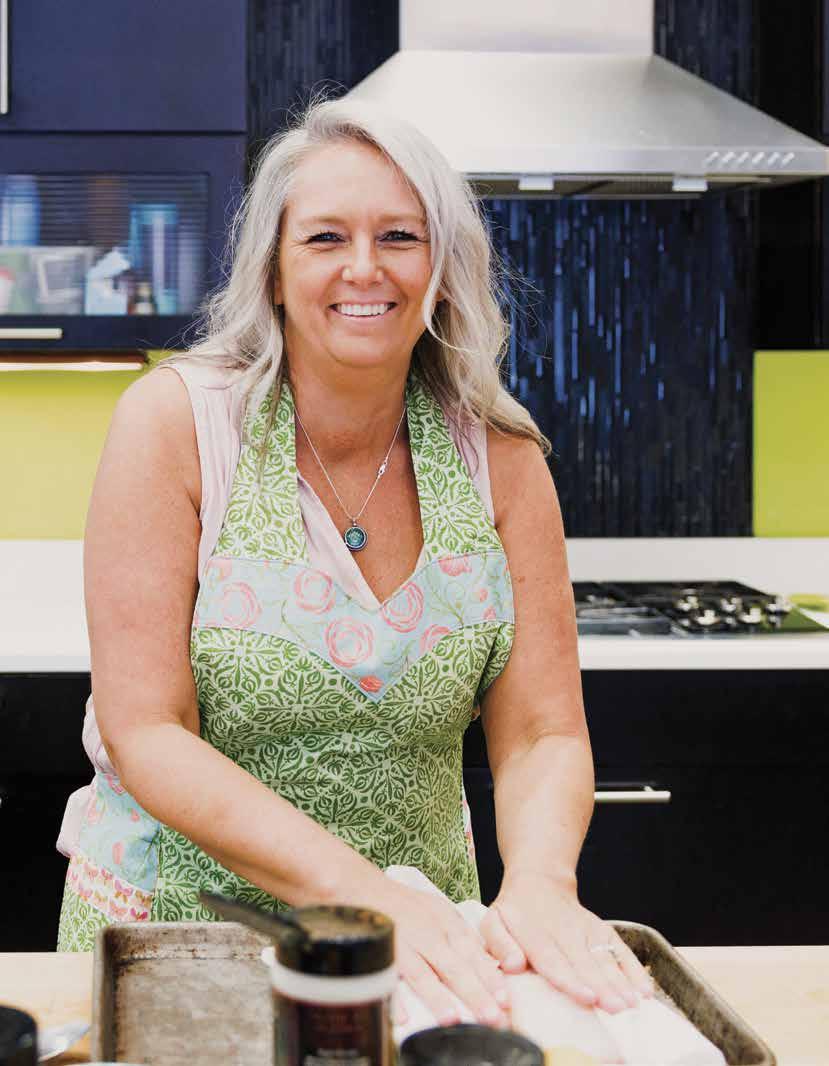 Photos by Young Kim
Photos by Young Kim
Sheet-pan grilled halibut with asparagus warms in the oven while Amie Sommer entertains guests in the kitchen she designed and built with her husband on the outskirts of Wasilla. He added the construction side to the environmental contracting firm she founded, Tutka LLC, named for the bay near Seldovia where she keeps a family cabin.
The Homer area happens to be where her company recently completed a major project, replacing a truss bridge over the Anchor River with a steel-girder single span. Sommer says that she’s proud of every project, but she’s especially interested in low-key environmental contracts. As a teenager, she collected hazardous waste for the Anchorage municipal landfill, which led to earning a degree in environmental science. One service Tutka provides is monitoring beluga whales for Cook Inlet development projects, which brings Sommer close to her childhood dream of becoming a wildlife biologist.
When the oven timer dings, Sommer adds bacon and parmesan cheese to the halibut and serves it with dill pickle dressing. Another heartfelt creation.
AB: What’s your best attribute and worst attribute? Sommer: I think my best attribute is numbers. And friendliness, approachability (yet stern). My worst attribute is sometimes I don’t know how to politely tell somebody off… I know how to tell them off, but sometimes I’m way too harsh, to the point… I’ve worked for years to try to get softer.
AB: Dead or alive, who would you like to see perform live in concert?
Sommer: Garth Brooks.
AB: What’s the most daring thing you’ve ever done? Sommer: Starting a business is daring. It’s still daring, and every time we have a big bid it’s daring. You get a bid and you’re worried that you messed up, so that’s, to me, probably the most daring thing I’ve ever done.
AB: Is there a skill you’re currently developing or have always wanted to learn?
Sommer: Short-term rentals… We’ve been doing a VRBO vacation rental retreat down there [in Arizona], and that’s been one of my side projects.
AB: What’s your greatest extravagance?
Alaska Business: What do you do in your free time?
Amie Sommer: Besides spending time with my family, I have a good group of girl friends. We try to get together and work out a few times a week. We do wine yoga.
AB: What’s your favorite local restaurant?
Sommer: The Grape Tap [in downtown Wasilla].
Sommer: Houses. We like to build properties and buy properties and sell properties. I like to decorate them—not lavishly, per se, but it costs money... I don’t get my nails done, let’s put it that way.




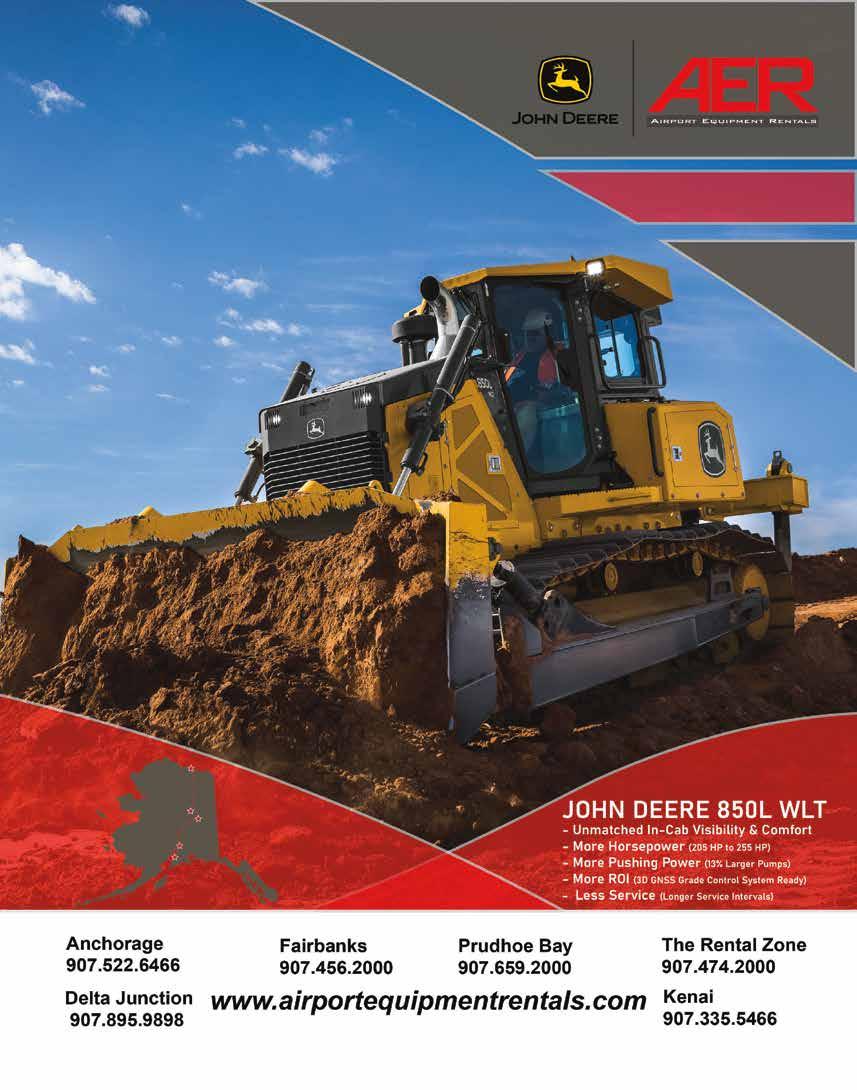


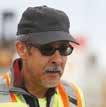
Thank you to our friends, neighbors, and valued customers for your ongoing support and partnership, and special thanks to each of our dedicated employees for their continued care, expertise, and ingenuity as we all work together to keep Alaska moving. We look forward to continuing to serve our communities by providing multi-modal transportation and logistics solutions across the entire state!












